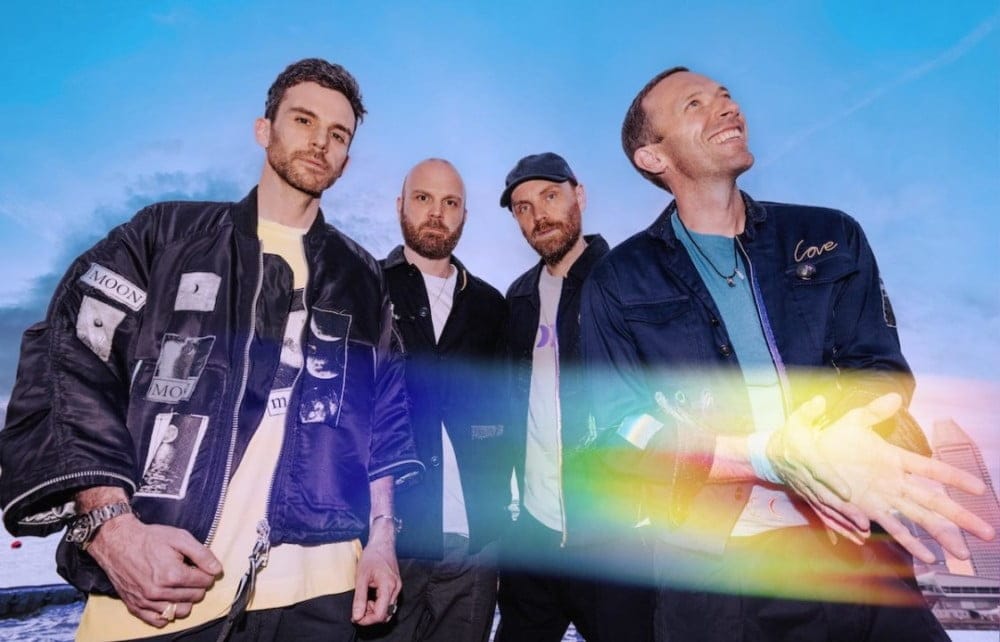
Coldplay announce premiere of A Film For The Future

Coldplay have announced a new project called A Film For The Future, the 44-minute visual companion to their No.1 album, Moon Music.
The film will premiere on YouTube on 22 January, with special 360-degree screenings of the film taking place at Lightroom in London, Manchester and Seoul.
A Film For The Future was first teased on a car numberplate in the artwork to Coldplay’s 2019 album Everyday Life. A section of the project also appeared in the 2024 lyric video for the band’s single feelslikeimfallinginlove.
It was created by over 150 different visual artists from 45 countries. Each artist was given a handful of music snippets from Moon Music and asked to create corresponding visuals. There were no rules or guidelines, and no knowledge of other artists’ creations.
Watch the trailer below:
Ambitious Project
Executive Producer Ben Mor, says the result is “a kaleidoscopic patchwork quilt – a 44-minute multimedia tapestry.”
Ben Mor continued: “It was a huge privilege to have the bird’s eye view of such an ambitious project, working with so many incredible animators and filmmakers all working independently of each other. The final film is simply jaw-dropping and I can’t wait for Coldplay’s fans to see it.”
Coldplay said: “We’re very grateful to all the amazing artists who lent their genius to this film. They’ve created something very beautiful and we’re extremely proud of it.”
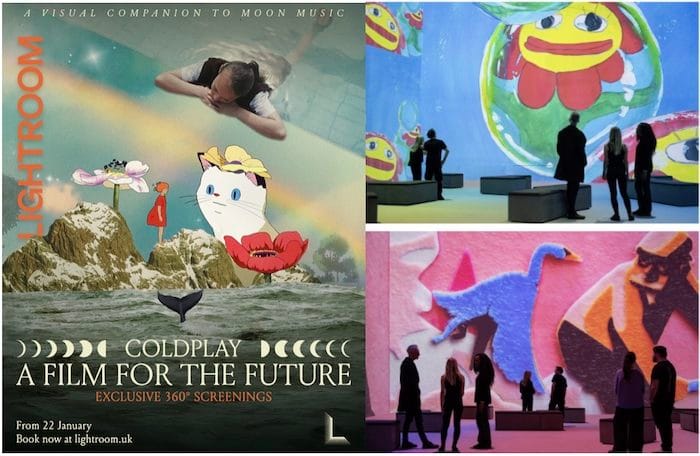
Special Screenings
To accompany the project, the band have also partnered with Microsoft to create an AI-powered A Film For The Future remix experience. Launching on the band’s website, fans can interact with the film in a unique way with no two results being the same.
As well as being available to watch worldwide on youtube.com/coldplay, fans can see A Film For The Future at a limited run of exclusive 360-degree screenings. These take place at: Lightroom London, Lightroom at Factory International at Aviva Studios in Manchester, and Lightroom Seoul. Tickets for the Lightroom screenings are available to purchase here
For further information click here
Sign up for the Classic Pop newsletter
The post Coldplay announce premiere of A Film For The Future appeared first on Classic Pop Magazine.
... Continue Reading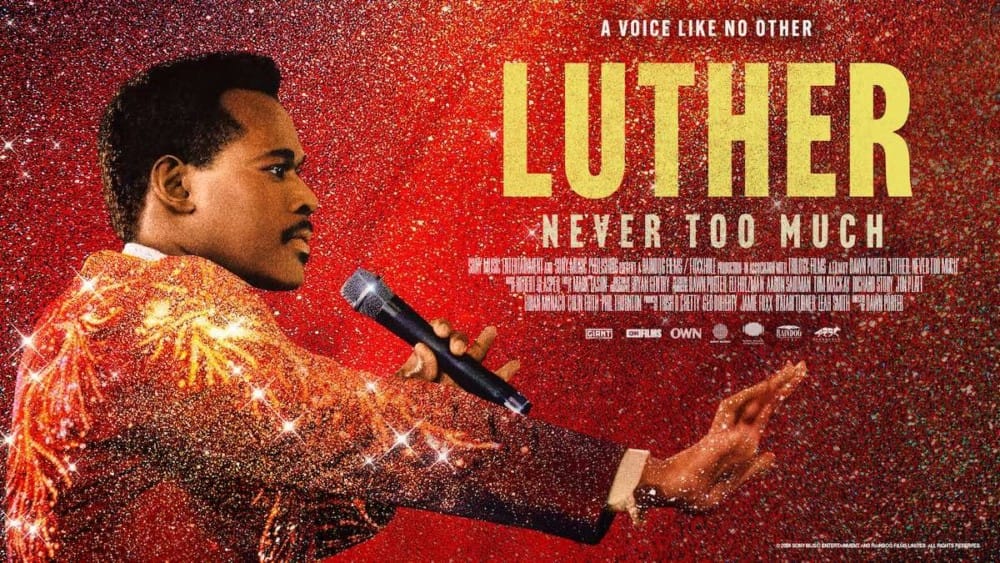
Luther Vandross documentary screened in UK cinemas

A new Luther Vandross documentary film, Luther: Never Too Much, is to be screened in UK cinemas for one night only.
The feature, from award-winning filmmaker Dawn Porter, chronicles the story of a vocal virtuoso and will be shown at select cinemas on Thursday 30 January.
Using a wealth of rarely seen archives, Luther tells his own story with assistance from his closest friends and musical collaborators including Mariah Carey, Dionne Warwick, Valerie Simpson and Roberta Flack.
Watch the trailer below:
Never Too Much
Prior to achieving success as a solo artist in the 1980s, Vandross had already spent the previous decade paying his dues as backing artist, catching his first big break on David Bowie’s Young Americans. He would go on to feature on releases by Chaka Khan, Diana Ross, Barbra Streisand, Bette Midler and Ben E. King – but, perhaps most famously, on Chic’s Le Freak.
His career breakthrough as a featured singer came with the vaunted pop-dance act Change, a studio concept created by French-Italian businessman Jacques Fred Petrus. Their 1980 hits, The Glow of Love (by Romani, Malavasi and Garfield) and Searching (by Malavasi), featured Vandross as the lead singer.
The singer struck out on his own in 1981 and went to No.1 on the US R&B chart with Never Too Much, the title track of his first album, and thus began a remarkable run of success that continued with hits such as How Many Times Can We Say Goodbye (with Dionne Warwick), Give Me The Reason, Stop To Love, I Really Didn’t Mean It and So Amazing.
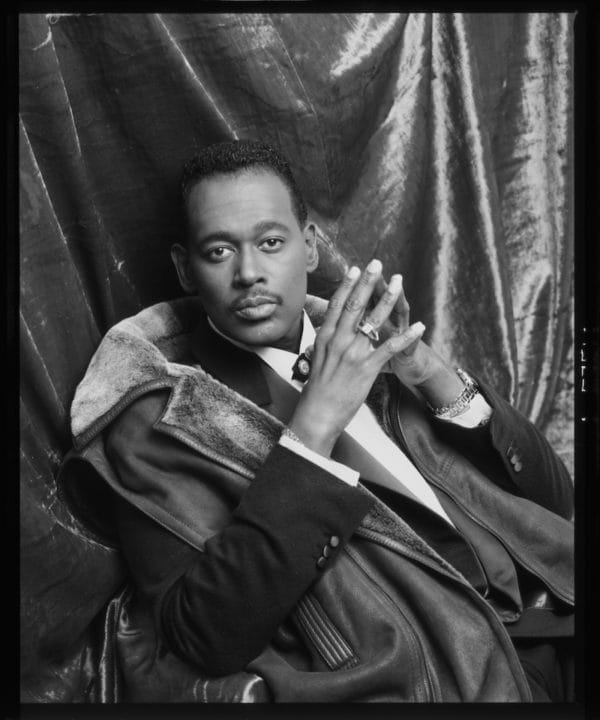
Endless Love
Duets with Janet Jackson and Mariah Carey in the 1990s, The Best Things In Life Are Free and Endless Love, landed the star at No.2 and No.3 in the UK singles charts in 1992 and 1994.
In 2003, after suffering a stroke, Vandross spent nearly two months in a coma, but the following year, he claimed another Best Male R&B Vocal Performance and a Song Of The Year Grammy, this time for Dance With My Father. Vandross died in 2005, at the age of just 54, of a heart attack.
Luther: Never Too Much relives the many stunning moments of Vandross’ career, while exploring his personal life, health struggles, and a lifelong battle to earn the respect his music deserved.
Premiered at last year’s Sundance Film Festival, Luther: Never Too Much, will be released in UK and Ireland cinemas for one night only on 30 January. For further ticket availability and cinema screenings click here
Read More: The Lowdown – Luther Vandross
The post Luther Vandross documentary screened in UK cinemas appeared first on Classic Pop Magazine.
... Continue Reading
Noel Gallagher joins Mantra Of The Cosmos for new single

Noel Gallagher joins Mantra Of The Cosmos, featuring Zak Starkey, Shaun Ryder, Bez and Andy Bell, on the collective’s new psychedelic single Domino Bones (Gets Dangerous).
Domino Bones (Gets Dangerous) marks the band’s latest outing following the singles Gorilla Guerilla and X (Wot You Sayin?) in 2023.
Shaun Ryder takes on lead vocal duties with Happy Mondays bandmate Bez on percussion. The group has Andy Bell of Ride, Oasis and Hurricane #1 on guitar and Noel Gallagher joins on vocals for the new single.
The band will showcase the track at the Cavern Club in Liverpool on 19 January and the single will be available for fans to purchase, in red or blue vinyl, at the gig and from the Cavern Club store.
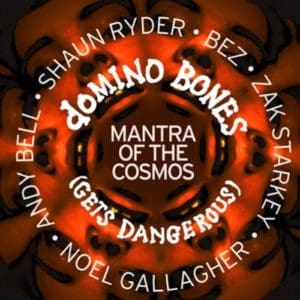
Free Bird For Mods
Zak Starkey has had stints in The Who, Oasis, Johnny Marr and the Healers and The Lightning Seeds. He also collaborated with his father in Ringo Starr & His All-Starr Band during the early to mid 90s.
Starkey describes the song as “Free Bird for Mods”, with a Noel Gallagher vocal, around which Starkey built the track, playing drums, bass, guitar and keyboards. Gallagher sings the chorus and Ryder the verses, while Bell adds an extended solo. The song title is the name of Bez’s first band.
Starkey said: “It’s not every day that the greatest songwriter of my generation – not to mention Shaun, the greatest beat poet of our times – sends a tune to me… It came together great – everyone digs it!”
Noel added: “Mantra Of The Cosmos is like Dylan, Dali and Ginsberg on a rocketship to the moon to have it with the Clangers.”
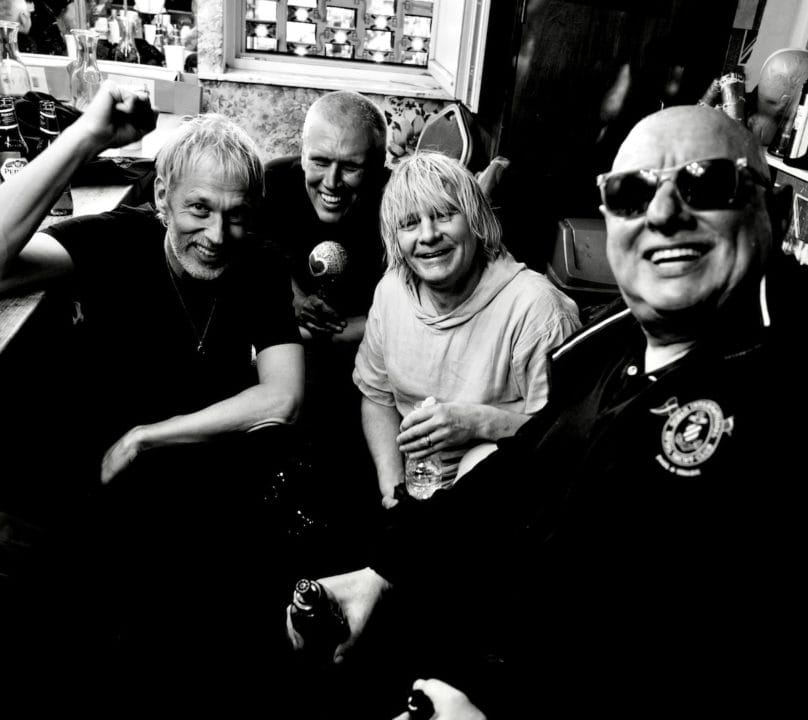
Family Heritage
Starkey has only visited Liverpool once before to visit his grandparents, and at the Cavern Mantra of the Cosmos will play two sets on 19 January, at 3pm and 8pm, with Bell and Ryder scheduled to DJ in between. The night will be compered by Philip Regen, AKA “The Queen Of Scotty Road”, and support will come from Liverpool band Keyside, as well as Chloe Slater for the later set.
The choice of show for the band’s return was a personal one for Starkey, who says: “Can’t believe I’ve never even been there. There’s a great deal of family heritage at the Cavern aside from The Beatles my parents courted there…
“It’s great to be playing there and they’re great people, really looking after us. The Cavern was rebuilt but it’s the original in spirit and I’m buzzing to be doing it.”
At a time when grassroots venues are under huge financial pressure, with many closing or at risk, Starkey champions their importance for new music. He added: “It’s what’s missing now in music – there should be Caverns everywhere. You used to be able to play almost every night of the week without a record deal.”
Rock Supergroup
Starkey said: “I first met Noel in a rehearsal room, John Henry’s in Brewery Road in London. I was in a band called Face during Britpop times and it was early 1995 and he came in and watched a bit. I met his brother for the first time at Oasis’s Earls Court shows in 1996. We’re Mods so we got on straight away.”
Starkey began drumming for Oasis in 2004, playing on Don’t Believe The Truth and Dig Your Own Soul.
In 2015, Starkey met Shaun Ryder during the filming of a returning TFI Friday. Starkey was the bandleader for a group featuring Liam Gallagher, Roger Daltrey, Ian Broudie, Bonehead, and Jay Mehler, which played My Generation.
Starkey said: “Shaun was on the show, and we literally said hello for five minutes and then a photograph – and that was it. Then I just cold called him about this group, which I didn’t want to be about guitars – I wanted to be about his words. He immediately said yes. I asked if his mate (Bez) was going to be in it and he said: ‘He doesn’t know yet – but he is.’”
In 2023 Mantra Of The Cosmos launched with the singles Gorilla Guerilla and X (Wot You Sayin?), and a Glastonbury Festival debut. Further singles are planned for 2025.
Domino Bones will be exclusively available on vinyl at the Cavern show and from the venue’s website here
Check out our 2024 interview with Black Grape
The post Noel Gallagher joins Mantra Of The Cosmos for new single appeared first on Classic Pop Magazine.
... Continue Reading
The Waterboys announce details of their 16th studio album

The Waterboys announce details of their 16th studio album, Life, Death And Dennis Hopper.
Out on Sun Records this April, it promises to be the most audacious Waterboys album yet and tells the epic story of the trailblazing American actor and rebel through a song cycle depicting not only Hopper’s story but the saga of the last 75 years of western pop culture.
“The arc of his life was the story of our times,” says Mike Scott. “He was at the big bang of youth culture in Rebel Without A Cause with James Dean; and the beginnings of Pop Art with the young Andy Warhol. He was part of the counter-culture, hippie, civil rights and psychedelic scenes of the 60s. In the 70s and 80s he went on a wild 10-year rip, almost died, came back, got straight and became a five-movies-a-year character actor without losing the sparkle in his eye or the sense of danger or unpredictability that always gathered around him.”
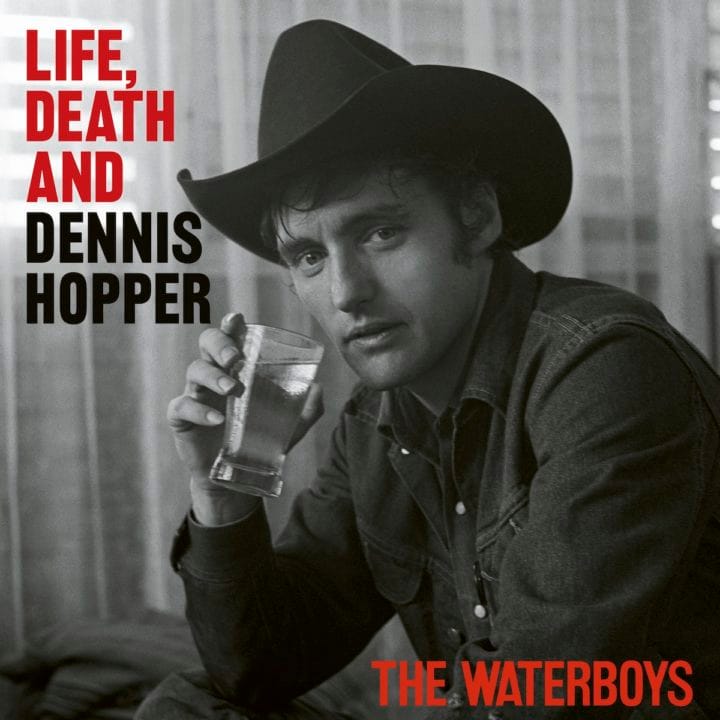
Life, Death And Dennis Hopper
Scott has worked for four years on Life, Death And Dennis Hopper. Produced with Waterboys bandmates Famous James and Brother Paul, the album spans 25 tracks and traces the extraordinary arc of Hopper’s life. “It begins in his childhood, ends the morning after his death, and I get to say a whole lot along the way, not just about Dennis, but about the whole strange adventure of being a human soul on planet Earth,” says Scott.
Alongside Scott’s masterful songwriting, the album features a stellar lineup of guests including Bruce Springsteen, Fiona Apple, Steve Earle, Nashville-based Alt Americana artist Anana Kaye, young English singer Barny Fletcher, Norwegian country-rockers Sugarfoot, Taylor Goldsmith of Dawes, Kathy Valentine of The Go-Go’s, and punk arch-priestess Patti Palladin.
Tracklisting
1 Kansas (featuring Steve Earle)
2 Hollywood ’55
3 Live In The Moment, Baby
4 Brooke / 1712 North Crescent Heights
5 Andy (A Guy Like You)
6 The Tourist (featuring Barny Fletcher)
7 Freaks On Wheels
8 Blues For Terry Southern
9 Memories Of Monterey
10 Riding Down To Mardi Gras
11 Hopper’s On Top (Genius)
12 Transcendental Peruvian Blues
13 Michelle (Always Stay)
14 Freakout At The Mud Palace
15 Daria
16 Ten Years Gone (featuring Bruce Springsteen)
17 Letter From An Unknown Girlfriend (featuring Fiona Apple)
18 Rock Bottom
19 I Don’t Know How I Made It (featuring Taylor Goldsmith)
20 Frank (Let’s Fu*k)
21 Katherine (featuring Anana Kaye)
22 Everybody Loves Dennis Hopper
23 Golf, They Say
24 Venice, California (Victoria)/The Passing Of Hopper
25 Aftermath
The Waterboys Tour
The Waterboys will embark on a 28-date UK and Irish tour through May & June:
May
01 Basingstoke Anvil
02 Bath Forum
03 Bexhill DLWP
05 Brighton Centre
07 Nottingham Rock City
08 Liverpool Philharmonic
09 Sheffield City Hall
10 Gateshead Glasshouse
12 Blackpool Opera House
13 Manchester Bridgewater Hall
15 York Barbican
16 Birmingham Symphony Hall
18 Bournemoth Pavilion
19 Cardiff New Theatre
20 Cambridge Corn Exchange
22 Bristol Beacon
23 Oxford New Theatre
24 Stockton-on-Tees The Globe
25 Llandudno Venue Cymru
27 Guildford Live
28 Leicester De Montfort Hall
31 London Roundhouse
June
01 London Roundhouse
07 Dublin 3Arena
08 Belfast Live At The Botanic Gardens
11 Aberdeen, Music Hall
12 Glasgow Royal Concert Hall
14 Glasgow Barrowlands
16 Glasgow Barrowlands
17 Leeds O2 Academy
19 Truro Hall For Cornwall
To book tickets click here
Life, Death And Dennis Hopper is released via Sun Records on 4 April. Pre-save here
Check out our live review from Moseley Folk And Arts Festival
The post The Waterboys announce details of their 16th studio album appeared first on Classic Pop Magazine.
... Continue Reading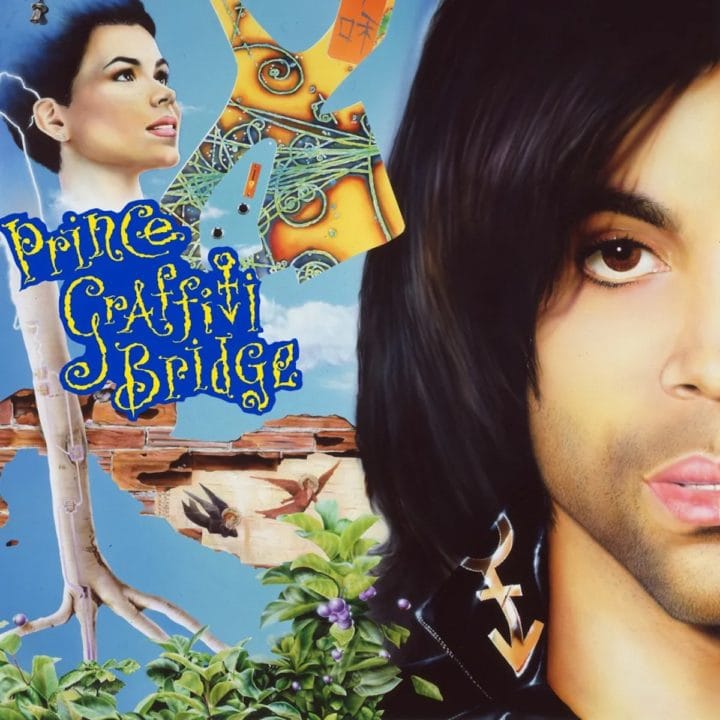
Album Insight: Prince – Graffiti Bridge

With a run of albums demonstrating his Midas touch behind him, Prince opened up the vault for his 12th studio effort, Graffiti Bridge – by no means his finest, but pivotal in his career…
Words by Beth Simpson
Graffiti Bridge is generally regarded as marking the end of Prince’s ‘imperial phase’, the period during which everything he touched seemed to turn to gold. The film has come to be known as an out-and-out turkey that stank so pungently that, notoriously, it went straight to video in the UK. The accompanying album, though, sandwiched between the inventive Batman soundtrack and the well-regarded Diamonds And Pearls, tends to be forgotten and is no one’s idea of their favourite Prince album. In Matt Thorne’s 2012 biography of the man, the chapter covering this era is entitled ‘What’s Wrong With Graffiti Bridge?’.
Quite a lot if we’re talking about the film. But if we’re concentrating on the soundtrack alone, well, that’s another matter entirely.
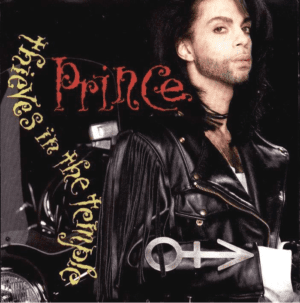
Under The Bridge
In many respects the album was a rounding up exercise for forgotten tracks that had been lying around Paisley Park waiting to find a home. Though the existence of an extensive stockpile of unreleased songs – the so-called ‘vault’ – only became known later in the 90s, this was the first time Prince had dipped into his unreleased stash to complete a new album project. Up until now, he hadn’t needed to. Why would he when he was putting out LPs as strong as Parade and Sign O’ The Times?
The opener Can’t Stop This Feeling I Got dates back to 1982 when it was recorded at home before another version was tried out four years later. We Can Funk (originally, ahem, ‘We Can Fuck’) had been recorded with The Revolution in 1986 but didn’t make the final cut for Parade. Tick, Tick, Bang dates from the Controversy sessions of 1981 and had originally been set aside for girl group protégés Vanity 6 to record before Prince thought better of it. Meanwhile Joy In Repetition had been due to be released on the Crystal Ball triple album in 1987 before that magnum opus was pared down to a double and released as Sign O’ The Times.
Paisley Park Vaults
But why did Prince even need to trawl the vault at this time? A lack of an overall vision for the entire project may well have played a part. From the start, Graffiti Bridge had had a troubled gestation – the movie had changed drastically since Prince had originally envisaged it back in 1987. Back then it wasn’t a sequel to Purple Rain at all, but a completely new story that would have featured Prince as ‘Camille Blue’, and another character Ruthie Washington, who Prince had originally wanted Madonna to play. He had even recorded a Graffiti Bridge soundtrack in 1988, a succinct 10-track record, which, aside from A Question Of U and the title song, had a completely different tracklist.
But Madonna turned down the role and it soon became clear that post-Under The Cherry Moon Warners were only interested in funding another Prince movie project if it was pitched as a sequel to Purple Rain. Also around this time Prince rekindled his friendship with Morris Day and started writing material for the reformed Time. Plus he’d also signed Mavis Staples and George Clinton to Paisley Park Records so why not include them on an accompanying soundtrack too?
Indeed, this is the first time a Prince album had contained tracks fronted by other artists, though of course he’d written and produced them. There were four songs by The Time, Prince’s celluloid rivals. Release It and The Latest Fashion are both the sort of directionless funk workouts that Prince could write in his sleep, whereas Shake is a kind of old-skool rock’n’roll dance number which purloins the keyboard refrain from 96 Tears. The Mavis Staples-featuring Melody Cool sees her adopt the titular persona, but it feels underdeveloped and repetitive, as if Prince had got bored halfway through writing it.
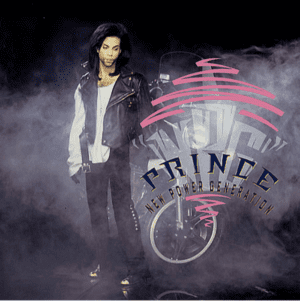
Hidden Gems
Elsewhere there’s Tevin Campbell, the New Jack Swing child star whose androgynous voice suits Round And Round’s minimal funk to a tee. More puzzling is the use of George Clinton on We Can Funk. You’d come expecting a grand funk summit between two of its greatest icons, but you can barely hear Clinton’s vocals in the mix. It’s as if he’s hardly there.
Also on the debit column there is the title track, a somewhat unlikely step towards musical theatre – you could imagine the cast of a Broadway musical production giving their all to the rather trite lines about how “everyone’s looking for love” and “everything’s gonna be alright”.
However Graffiti Bridge does contain a number of gems that stand comparison with some of Prince’s greatest work. The Question Of U is a wonderfully languorous piece with syncopated handclaps and a guitar solo that confirms that Prince was one of the best guitarists in the world (as well as everything else).
Bold Generation
Then there was Elephants & Flowers, a gospel-influenced slice of Prince pop which contains the brilliantly odd refrain “there will be peace for those who love God a lot”. Joy In Repetition is another of those little gems that tend to get forgotten about, with a halting half-spoken, half-sung vocal and another eye-screwingly impressive guitar solo from the man himself.
Perhaps best of all is Still Would Stand All Time, a wonderfully woozy-sounding, gospel-influenced ballad which had been first recorded in 1988 and had been considered for the Batman soundtrack, before being reworked with backing vocals from The Time for Graffiti Bridge. It’s another one that often gets overlooked, but in the pantheon of Prince ballads it’s up there with Parade’s heartbreaking finale Sometimes It Snows In April.
The album’s lead single, Thieves In The Temple, was the last to be recorded for the project, in February 1990. Though not at the same level as predecessors such as Kiss or Alphabet Street, its nonetheless one of the more memorable moments from the album, and rightly turns up on most hit compilations. Its follow up, New Power Generation (originally titled ‘Bold Generation’), would provide us with a sneak preview of his next ensemble. The NPG itself hadn’t been fully assembled at the time of Graffiti Bridge’s release though guitarist Levi Seacer Jr had been playing with Prince since 1987, drummer Michael Bland had been in the band for a year and keyboardist Rosie Gaines plays on several Graffiti Bridge tracks.
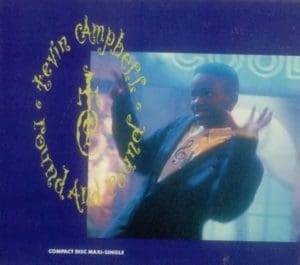
New Jack Swing
Lyrically, New Power Generation is as close to a manifesto as Prince has ever drawn up. He had used the phrase before – in a preamble to the Lovesexy LP track Eye No, Ingrid Chavez had intoned, “Welcome to the New Power Generation”. But here Prince fleshes out the concept with a two-part exercise in what could be described as militant funk, as he dismisses his opponents’ “old fashioned music, your old ideas/ We’re sick and tired of you telling us what to do”.
There’s an undercurrent of this sort of abrasiveness, this snippiness, in Graffiti Bridge, as he admitted in an interview with Rolling Stone in 1990: “I feel good most of the time, and I like to express that by writing from joy. I still do write from anger sometimes, like in Thieves In The Temple. But I don’t like to. It’s not a place to live.”
Of course, this feeds into the plot of the movie – essentially The Kid’s band versus The Time – but on another level you wonder whether Prince himself was feeling the heat of the changing musical climate. We already know that he regarded hip-hop as a threat (see Dead On It from The Black Album) and he was aware that New Jack Swing, the dominant pop style of late 80s/early 90, was largely the work of ex-Time members Jimmy Jam and Terry Lewis. After leading the pack – creatively and critically – for so long, he knew he had competition and would have to raise his game accordingly.
The Pop Picasso
Graffiti Bridge, then, is not short of highlights. But at an overlong 68 minutes running time, it is probably the first – but certainly not the last – example of a Prince album to suffer from CD bloat. Whereas the double set Sign O’ The Times seemed to fly by, Graffiti Bridge drags towards the end and you could make a convincing case for reducing it to a killer single album.
It’s worth pointing out that critics were not unduly harsh at the time. Indeed, many were exalting in their praise. Greg Sandow in Entertainment Weekly claimed that Graffiti Bridge “seems to be a masterpiece”. Rolling Stone’s Paul Evans declared it as “a 17-song tour-de-force that reclaims Prince’s rare stature as a pop Picasso”. The Washington Post’s Geoffrey Hines could barely contain his glee, calling Graffiti Bridge “one of the most erotic, sexually stimulating albums in pop music history.”
Sexually Stimulating
There was an element, it must be said, of not wanting to be the first courtier to stop applauding to these contemporary reviews; as this point Prince had been feasting on critical hosannas for over half a decade. As time went by, more critics began to swoop. John Freeland, writing in The Quietus in 2012, described it as “horrible”. Robert Christgau, the self-styled ‘dean’ of US rock critics, meanwhile, moaned that “half the music isn’t really his, and the other half is overly subtle if not rehashed or just weak.”
Not that Prince has ever had any time for critics. “There’s nothing a critic can tell me that I can learn from. If they were musicians maybe, but I hate reading about what some guy sitting at a desk thinks about me,” Prince told Rolling Stone around this time. “Now, on Graffiti Bridge they’re saying I’m back and more traditional. Well, Thieves In The Temple and Tick, Tick, Bang don’t sound like nothing I’ve ever done before.”
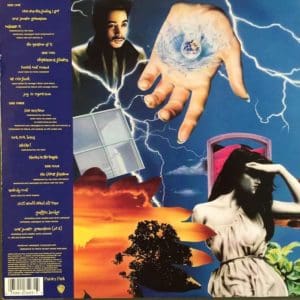
A New Power
He would have been more stung by the album’s commercial performance. The only major territory in which it topped the charts was the UK, where – not coincidentally – the film didn’t get a cinema release. It’s clear that the hammering that Graffiti Bridge the movie received from film critics affected sales of the album. In the States it struggled to No.6 and a mere 500,000 sales (by contrast the Batman LP had shifted over two million; Purple Rain to date has sold over 13 million).
This must have hurt a man of Prince’s ego and Graffiti Bridge represents a turning point in his career. Never again would he be diverted away from his core concern – music – by cinema. It also marks the start of a new collaborative phase in his career. Having made the last three records largely on his own, he was clearly warming to the idea of having a full-time band behind him once again. His next project would see the return to core values, a shared credit with a backing group and would end up becoming his most fondly regarded and, arguably, best album of the decade.
The Songs
Can’t Stop This Feeling I Got
Graffiti Bridge kicks off with Prince speaking to his father: “Dear dad, things didn’t quite turn out the way I wanted them to/ Sometimes I feel like I’m going to explode”. Followed by, yes, an explosion. That’s the unlikely intro to a breezy pop track that’s a close cousin of Play In The Sunshine off Sign O’ The Times.
New Power Generation Part I
The most immediate track on the album was released as the third single in October 1990 but could only reach US No.64. The bridge lyrics “making love and music are the only thing worth fighting for” could neatly summarise Prince’s whole worldview. Despite it essentially christening his new group, it’s a track that was never played live by Prince after 1991.
Release It
A spoken-word intro by Morris Day and a squally sax solo ushers us into the first appearance by The Time on Graffiti Bridge. Morris gives it his all, asking his band members “whose crib is this? (My crib!). Whose wine you drinkin’? (Mine!)”. But despite his best efforts, there’s no disguising that this is Prince going through the motions, a funk jam that doesn’t go anywhere, that could have easily been cut.
The Question Of U
Another track that had spent a long time in the vault before finding a home, The Question Of U builds from a lolloping blues rhythm, adding layers of handclaps, an outstanding guitar solo, gospel vocals and even a touch of harpsichord to become a thing of beauty. At one point it was mooted as a possible single release, but was eventually cancelled.
Elephants & Flowers
Recorded by Prince and Prince alone on a day off from the Lovesexy tour in 1988, Elephants & Flowers is one of those tracks that is a testament to the man’s casual genius. It’s minor perhaps, with lyrics that don’t stand close scrutiny, but the hip-grinding guitar riff, gospel backing vocals and air of untrammelled joy make it one of the keepers on Graffiti Bridge.
Round And Round
Tevin Campbell’s feature on Graffiti Bridge is a decent enough song, but arguably doesn’t quite fit on the album. Maybe that’s because the finished version was remixed by DJ Junior Vasquez and thus lost some of its Prince-iness along the way. It did become a hit, though, reaching Billboard No.12 in September 1990.
We Can Funk
Tried out as ‘We Can Fuck’ as long ago as 1983. Allegedly, it’s a duet with George Clinton, though you can hardly hear Dr Funkenstein in the mix. Incidentally, Prince reused one of its synth lines when he wrote Martika’s Kitchen, the title track of the singer’s 1991 album.
Joy In Repetition
Seguing straight from We Can Funk, this is a strung-out, percussion-heavy track recorded by Prince alone back in 1986, except from backing vocals from Susannah Melvoin. It’s another that was on the original tracklisting for Crystal Ball until it was pared down to Sign O’ The Times. He half-speaks, half-sings and unleashes another incredible guitar solo, before the track curls up inside itself and segues straight into…
Love Machine
Not The Miracles hit, but another Time funk workout. Interest is raised by the vocal interplay between Morris Day and Elisa Fiorillo – her first appearance on a Prince record – and those forced laugh ‘huh huh huh huh huh’ backing vocals. Also appearing is Candy Dulfer, the sax player best known for the hit Lily Was Here, who would join the NPG as a full-time member later in the 1990s.
Tick, Tick, Bang
Another relic dug up from the early 1980s, from the sessions for Controversy to be exact. With squally guitar, scratchy noises, synth bangs and crashes, it’s one of those tracks where he throws all sorts of unlikely ingredients into the pot but still emerges with something that is utterly compelling.
Shake!
The best of the four Time tracks on the album is a 1990s update on those rock’n’roll dance records from four decades previously. It’s featured in the film and indeed it’s worth checking out the excerpt from the movie on YouTube, which sees Morris Day and the band perform the song on a stage surrounded by burning flames.
Thieves In The Temple
In contrast, the lead single is one of the darker moments from the album – it’s a rare moment in which Prince confesses to loneliness (“my only friend is you”). There are Oriental touches on the synths, plus a harmonica sample from The Chambers Brothers 1967 track I Can’t Stand It and a stop-start rhythm that makes it unusual for a Prince single. That didn’t stop it reaching No.7 in the UK and No.6 in the US.
The Latest Fashion
Another of the Time tracks that arguably could had been kept off the tracklist in order to create a stronger album. The opening “Go Morris! Go Morris!” chants are probably the most memorable moment of what is a duet between Day and Prince that doesn’t go anywhere.
Melody Cool
Mavis Staples’ opening speech about “crossing bridges” and “trials and tribulations, heartache and pain” is, of course, a nod to her role in the Civil Rights struggle. A pity that the track doesn’t really go anywhere after that, the lyrics largely consisting of “they call me Melody Cool” repeated over and over.
Still Would Stand All Time
The highlight of the LP arrives late, a beautiful ballad that leans heavily into gospel, with subtle orchestration and The Time and The Steeles all providing backing vocals. This had been considered for the Batman soundtrack but was replaced by Scandalous and eventually found a natural home as the pivotal moment in the movie’s plot, with The Kid winning his battle with a ballad, much to The Time’s chagrin.
Graffiti Bridge
Not one of his finest moments, it must be said. With its trite lyrics, the title track wouldn’t have sounded out of place in High School Musical. Mavis Staples adds some vocal heft, as do Tevin Campbell and Sheila E, but nothing can rescue what’s one of the few Prince tracks that can only be described as embarrassing.
New Power Generation Part II
Graffiti Bridge ends with a reprise of this, which adds a rap from TC Ellis and an instrumental run out. The album ends with the sound of running water and a drawled voice (Prince’s) intoning “the New Power Generation have just taken control”.
For more on Prince click here
Read More: Essential Prince In The 90s
The post Album Insight: Prince – Graffiti Bridge appeared first on Classic Pop Magazine.
... Continue Reading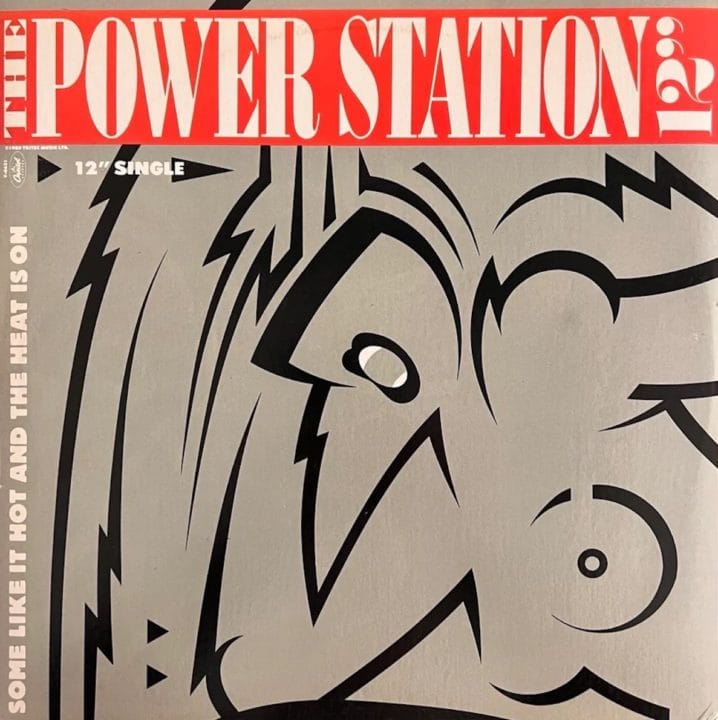
Top 20 Duran Duran Collaborations

We countdown the Top 20 Duran Duran Collaborations across their 40-plus years in the business…
Duran Duran have always been receptive towards outside input, aligning themselves with the best and most interesting players in their respective fields. But in their mid-80s heyday, the boys kept the ‘featured artist’-style collaborations at arm’s length, reserving such dalliances for side projects or one-off events, rather than within the day job.
During that initial run, side projects allowed members to exercise their own artier ambitions, beyond the limits and expectations of the group’s teen pin-up status. These days, however, it’s typical for a new studio album to contain a smattering of named guests, highlighting their A-list pulling power and wealth of showbiz mates.
Inevitably, it can be hit and miss. But collaborations, when done well, are a wonderful thing. Often, the coming together of contemporary peers from different corners. Or perhaps a passing of the baton to the next generation. The young’uns get a leg up from the legends, while the old-timers can look hip by association. To succeed, the sum must be greater than its parts.
With too many to list here, honorary mention goes to TV Mania, (Sex Pistols meets Guns N’ Roses supergroup) Neurotic Outsiders, producer Erol Alkan, Bowie’s pianist of choice, Mike Garson, and Susanna Hoffs of The Bangles.

20 ANA MATRONIC
The Scissor Sisters’ co-vocalist lends her lungs to Safe (In The Heat Of The Moment) on 2010’s All You Need is Now. On paper, it’s the perfect pairing. And sure, they deliver a funky, up-tempo disco workout that gets the toes tapping. It’s a fun, serviceable track custom-made for the dancefloor, supplemented with some frisky cowbell that infuses a Rio carnival flavour. Though, for all the sense of momentum, in truth it doesn’t quite live up to the promise, failing to light up in the way that it perhaps could have done. True to the title, they are playing it safe.

19 JOHN FRUSCIANTE
The Red Hot Chili Peppers guitarist is no stranger to funky riffs and chart success, making him an inspired choice to fill the six-stringed hole in Duran’s sound on Paper Gods. Frusciante contributed his signature licks and slinky flourishes to four tracks, including Butterfly Girl, The Universe Alone and Northern Lights, plus a screaming, reverb-laden solo, more akin to Brian May, on What Are The Chances?. His parts were delivered remotely, but it’s tantalising to imagine what they could have achieved, had they jammed it out together in the same room.
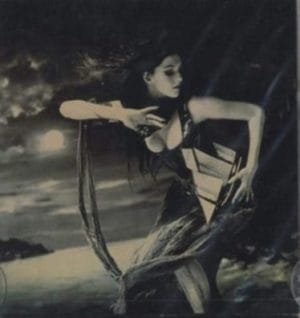
18 NICK WOOD
Though not a household name, the producer is particularly in demand for his TV, film and commercial work. Introduced by Wood’s roommate and Le Bon’s future wife, Yasmin, they worked together on Simon’s first solo outing, Grey Lady Of The Sea – a standalone track for the soundtrack of Drum, a documentary on Le Bon’s attempt at the Whitbread Round The World Race 1985. It followed a near life-threatening episode when they capsized off the Cornish coast. The ultimate yacht rock anthem is a lost treasure that deserves salvaging from the deep.
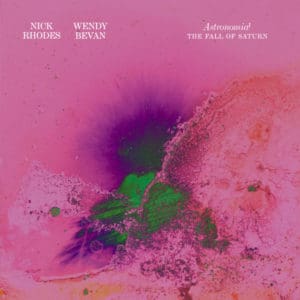
17 WENDY BEVAN
Nick Rhodes is the group’s serial collaborator, routinely filling time between Duran Duran commitments with various projects, often of a cerebral outlook. Such an example is Astronomia, with Wendy Bevan, borne out of the Covid lockdowns. But far from simply dipping a toe in to help pass the time, this is a fullyrealised, four-album suite of instrumental music. With titles including The Eclipses Of Algol and Heaven And Hell In The Serpent’s Tail, it’s unlikely to be popping up on daytime radio, but it’s the real deal.
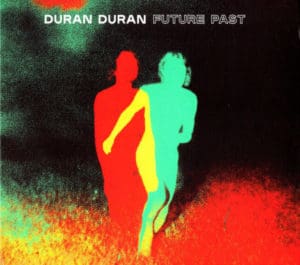
16 GIORGIO MORODER
Really, what took them so long? Giorgio Moroder’s sound is all over early hits like Planet Earth, while their first ever performance together as a five-piece was a cover of I Feel Love at the Rum Runner. But it took them another 40 years to get together. Rhodes’ girlfriend arranged a surprise birthday meeting, then, another five years later, plans were made. Moroder turned up with a small suitcase, pulled out a keyboard and they got down to business. Talking to Rolling Stone, the boys noted that Moroder was very precise, taking no crap from anyone.
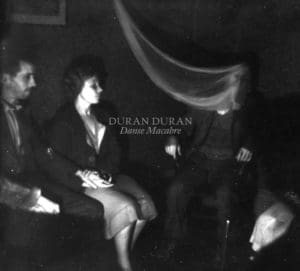
15 MR HUDSON
An unlikely protégé of Kayne West, Birmingham-born Benjamin Hudson McIldowie was initially touted as a new-folk troubadour, but has since found his true form as the go-to hip producer for US R&B royalty. Clearly, Duran Duran wanted a slice of the action, perhaps enticed further by sharing a hometown connection. Mr Hudson produced the album Paper Gods, while appearing as a featured guest on the track of the same name, and has continued to work with them on Danse Macabre.

14 LINDSAY LOHAN
One of many high-profile collaborators on Paper Gods, the former child star, later maligned somewhat cruelly as tabloid fodder, seems a curious choice to provide the spoken word vocals on Dancephobia. That said, it helps to have showbiz mates, and her contribution fits the bill perfectly; her sultry tones echo the vibe of Madonna circa Vogue. Danceophobia is one of the more divisive tracks on the record, a clear attempt at sounding on the pulse with the then-current electro funk dominating the charts. But taking cues from Daft Punk, it’s harmless fun that will shatter one’s fear of the dancefloor.
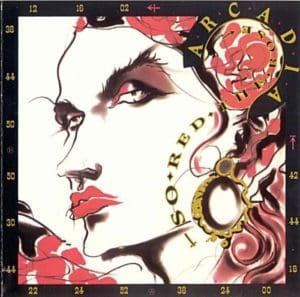
13 ARCADIA (STING/ DAVID GILMOUR/ GRACE JONES)
Arcadia’s one-off album, So Red The Rose, spawned a string of A-list collabs, including heavyweights Sting and David Gilmour on the gorgeous The Promise. A beautifully subtle, melancholy track, one might have expected more bombast given the cast. Sting is largely relegated to backing vocals, while the driving element throughout is Mark Egan’s stunning fretless bass. Elsewhere, Grace Jones drops in on Election Day, and though a fleeting cameo, her presence make the perfect embellishment.

12 IVORIAN DOLL
An interesting choice of collaboration, this one appears to fall into the category marked ‘street cred with the kids’: aligning with an upcoming urban artist from the UK drill scene, whose career began as a YouTuber. However, any cynicism is swept aside by the surprisingly great results. The rapper lays down a sweet guest verse on Hammerhead, a fan favourite on 2021 album, Future Past. With Blur’s Graham Coxon on guitar, Hammerhead rides along on a funky, boxy wah-wah slap bass riff from John, rousing gospel backing vocals and electro flourishes that recall Gorillaz.

11 TOVE LO
The Swedish starlet Ebba Nilsson, aka Tove Lo, is a regular chart fixture, having worked with many A-list artists including Coldplay (Fun), and co-written for stars including Dua Lipa, Ellie Goulding, Charli XCX and Kylie Minogue. Known for her “brutally honest” songwriting, it was only a matter of time before drawing the attention of the group, appearing on Give It All Up on Future Past. It’s a hypnotic, ethereal track, made more so by Tove Lo’s glassy vocals. The slow burner rides along on a four-to-the-floor beat, gradually building in intensity.

10 MARK RONSON AND FRIENDS
The band first worked with Mark Ronson when Le Bon and Rhodes appeared on the title track of his third album, Record Collection, alongside with UK grime star Wiley. In the same year, the Ronson-produced All You Need Is Now featured a host of big-name collabs ranging from Ana Matronic to Kelis. Curiously, Kelis’ excellent though understated contribution to The Man Who Stole A Leopard is upstaged by an unlikely collaboration: newsreader Nina Hossain’s recounting of the titular fictional news story.
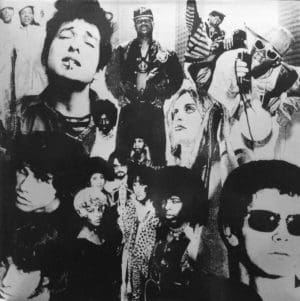
09 MELLE MEL AND GRANDMASTER FLASH
1995’s covers album, Than You, has been derided as the “worst album ever”. But it includes some gems, including their inspired take on the classic 1983 hip-hop track White Lines (Don’t Do It). For authenticity and approval, they brought in original creators Melle Mel and Grandmaster Flash of the Furious Five. It may seem an unlikely mishmash, but it fared surprisingly well, pre-empting the rave-rock of The Prodigy’s Firestarter, thanks to some meaty riffs courtesy of Warren Cuccurullo.
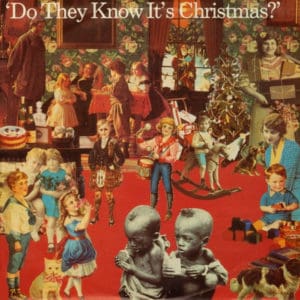
08 BAND AID
Well, we had to include it, didn’t we? It is, after all, the biggest collaboration of all time; the collaboration to end all collaborations. Much parodied, but forever remaining a cultural behemoth, the star-studded Band Aid (of which Duran Duran were probably the biggest names at the time) was the peak event in pop history. It’s also their only collaboration to include all five original band members, that’s not specifically labelled as a Duran Duran record. Simon Le Bon was awarded the best line (something upbeat about having a party), and it inadvertently led to working with Sting on Arcadia, after discovering how well their voices blended.

07 VICTORIA DE ANGELIS
The young Danish-Italian bassist adds her low-end grooves to Danse Macabre, playing on Talking Heads cover, Psycho Killer. De Angelis rose to prominence as part of the group Måneskin, who first appeared on the Italian X-Factor, before winning Eurovision in 2021. Far from being put out by the competition, it was Duran’s own four-stringer, John Taylor, who extended the invite. The pair met at a party, bonding over their shared love of Talking Heads bassist Tina Weymouth, and their bass battle is a pure delight. As their instruments lock horns, De Angelis delivers the goods, injecting sass into their sound.

06 GRAHAM COXON
Like John Frusciante before him, Blur’s guitarist was enlisted on Future Past to solve their ‘guitar problem’. Ostensibly, they couldn’t be more different: Blur helped usher in the gritty, back-to-basics approach of the 90s that swept away the glam sheen of the 80s that Duran Duran represented. Coxon remains the scruffy, bookish beatnik, compared to the pristinely tailored boys. But sonically, it’s a match made in heaven. Coxon took the appointment seriously, schooling up in advance to see how he could supplement the sound. Talking to Rolling Stone, Simon commended the “strong flavour” he brings, while John called Coxon’s contribution “absolutely immense”.
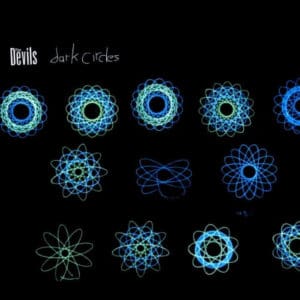
05 STEPHEN DUFFY
2002’s Dark Circles by The Devils was a blast from the past, with Nick Rhodes collaborating with Duran Duran’s original frontman, Stephen Duffy. The creative flame was reignited following a chance encounter between the pair at an art gallery, when Duffy revealed he had found the old master tapes of their formative recordings in late-70s Birmingham. The result is a homecoming of sorts, while hinting at the darker edge the band might have taken in a parallel universe. Within a few years, the playing field would be levelled somewhat, after Duffy produced Robbie Williams’ best-selling Intensive Care.
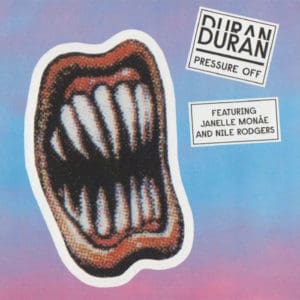
04 JANELLE MONÁE
A featured spot from Ms Monáe is like a badge of honour, and the R&B singer obliged on fab single, Pressure Off. Some collabs look great on paper though don’t deliver the goods, but this ain’t one of them. It’s everything you’d hope it to be and more: a big can of sunshine, bubbling over with goodtime vibes and sheer zest for life. Pressure Off is a celebration of everything that Duran Duran stand for. Released at a time when the best of the 80s was being celebrated rather than maligned, it succeeds at reminding everyone of the rightful owners of the pop crown.
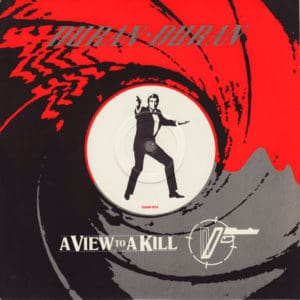
03 JOHN BARRY
“Bon. Simon Le Bon.” Their first time working with an external writing partner led to one of the finest Bond themes ever, though the initial meet-up apparently ended up as a drinking session. A View To A Kill was the first truly 80s Bond theme, bucking the trend of classic crooner throwbacks for a contemporary, fresh take. Yet those strings and horn stabs from film composer Barry add a touch of cinematic opulence. It’s still the only 007 theme to top the US Billboard 100, and you’ve got to love Godley And Creme’s Bond-inspired Eiffel Tower music video, too.
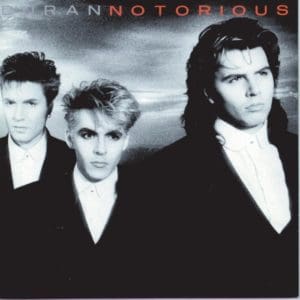
02 NILE RODGERS
Duran Duran’s lasting partnership with the Chic guitarist wins the longevity prize. The producer has sprinkled gold dust on many of the band’s records over the years, beginning with his No.1 remix of The Reflex, before producing the remaining trio on Notorious (following Andy and Roger’s departure). Most recently, Rodgers lit up Pressure Off, and contributed to Black Moonlight on latest album Danse Macabre, also taking to the stage with them alongside Ms Banks at the Queen’s Platinum Jubilee.
Though not the only member of Chic that Duran have worked with, Nile Rodgers has become an honorary member, welcome to drop in and lay down some funky chops whenever. During a live set in the 80s, Simon introduced him onstage, saying, “This band went through a difficult time [during Notorious]. The band might not have made it if it weren’t for this gentleman…”
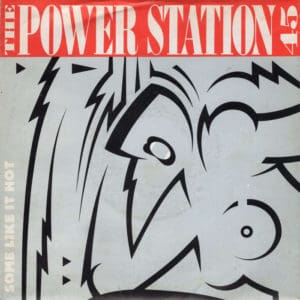
01 THE POWER STATION (ROBERT PALMER/ TONY THOMPSON)
In the ballsier of the two mid-80s splinter groups, Andy Taylor finally got to live out his guitar hero ambitions. Robert Palmer’s gravelly vocal tones switched the smooth, rich melodrama of Simon Le Bon for a grittier rock’n’roll swagger. Their biggest single, Some Like It Hot, reached No.6 on the Billboard charts and No.13 in the UK, while their T-Rex cover version, Get It On (US No.9 and UK No.22) is wonderfully unbridled. The Power Station proved the perfect name for the project: muscular and unflinching, just like its brash, robust 1980s production.
Those thundering drums from Chic’s Tony Thompson, the two wild boy Taylors, and that voice. Though only a tantalisingly fleeting hook-up (briefly reprised in 1996, though John Taylor doesn’t play on their reunion album, the disappointing Living In Fear), it tops out on sheer firepower alone.
For more on Duran Duran click here
Read More: Words & Pictures – Duran Duran dip into the archives
The post Top 20 Duran Duran Collaborations appeared first on Classic Pop Magazine.
... Continue Reading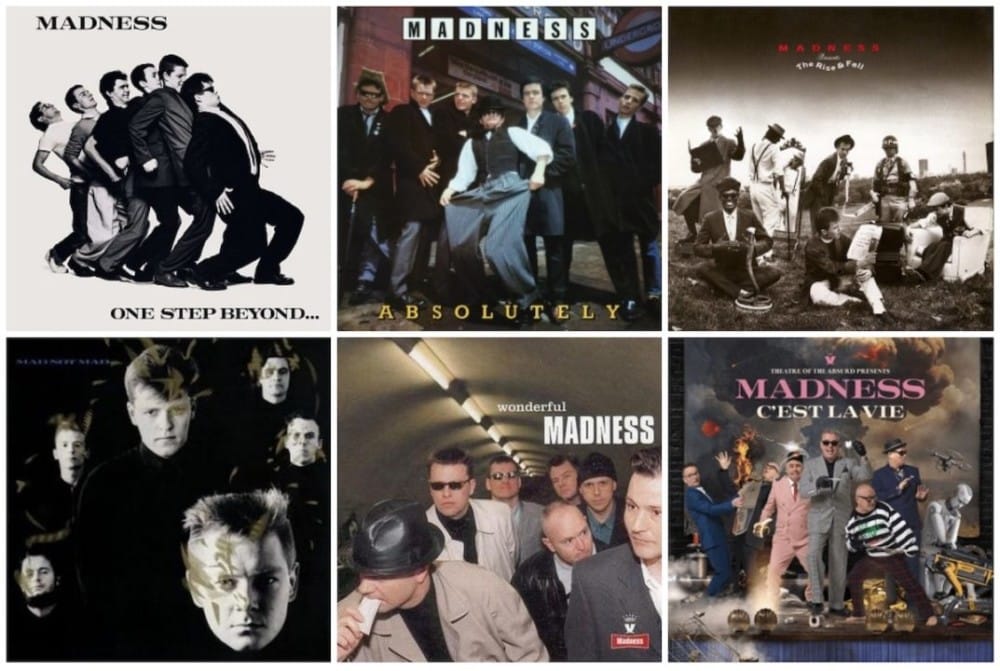
Album By Album – Madness

Camden Town’s finest, Madness, helped define the early 80s with their distinctly nutty take on the 2-Tone sound before expanding their musical vision with aplomb for a triumphant second wind
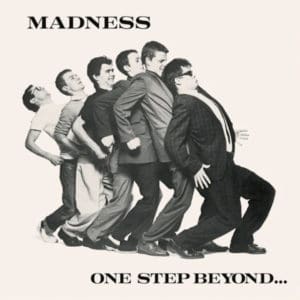
One Step Beyond (1979)
One could say that the chaos of the Madness songs on their debut album reflected the chaos of their formation. Originally performing under the guise of the North London Invaders in 1976, the band went through multiple line-up changes over the following three years: both trumpeter Cathal ‘Chas Smash’ Smyth and saxophonist Lee Thompson temporarily left after arguments with keyboardist Mike Barson, while frontman Graham ‘Suggs’ McPherson was briefly kicked out for neglecting his duties in favour of following his beloved Chelsea.
But eventually, the core line-up, which also includes guitarist Chris Foreman, bass player Mark Bedford and drummer Dan Woodgate, managed to settle their differences long enough to hit London’s Eden Studios. Not that One Step Beyond… took much time to record. Produced by Clive Langer and Alan Winstanley, both an essential part of the Madness story themselves, its 15 tracks were done and dusted within the space of just 10 days.
The Nutty Boys
This sense of urgency and pure energy is palpable throughout an astonishingly ambitious LP which incorporated various homegrown cultural traditions (music hall, vaudeville, and the great British seaside), playful character sketches and the sounds of the West Indies to create a genuine musical funhouse. The latter, of course, is most prevalent on the title track originally recorded by Prince Buster, the Jamaican ska legend who inspired Madness’ name as well as their debut single The Prince – and surely 1980’s least obvious Top 10, Night Boat To Cairo (“miles of introduction… no chorus,” Suggs admitted in Madness: One Step Beyond).
But while the album always has one foot in the 2-Tone revival, which also birthed The Specials (whose eponymous debut was also released on the same day) and Selecter, it isn’t afraid to dip the other in all kinds of waters. In The Middle Of The Night is a Chas and Dave-esque bar-room boogie about the exploits of a suburban underwear thief. There are classic rock’n’roll throwbacks (Rockin’ In A¢Ú), jangle-pop ditties (Bed And Breakfast Man) and singalongs heavily indebted to musical hero Ian Dury (My Girl).
Even Tchaikovsky gets the Nutty Boys treatment on an audacious reworking of Swan Lake. And, aside from the politically incorrect Mummy’s Boy, the group’s sheer exuberance of youth has aged remarkably well, too.
“Hey you, don’t watch that, watch this,” toasts the opening UK Top 10 hit that instantly put Madness on the map. No self-respecting ska-head of 1979 needed to be told twice.
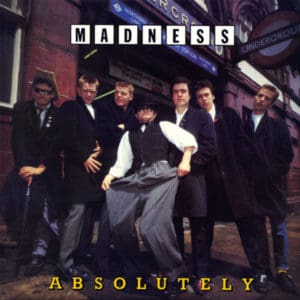
Absolutely (1980)
As for Madness, they’re still the Blues Brothers – though it’s unlikely anyone will give them $30 million to waste on a third-rate movie,” wrote Rolling Stone’s Greil Marcus of the band’s second LP in a one-star review which also took aim at fellow 2-Tone revivalists The Specials. Of course, what was intended to be a derogatory remark could just as easily be interpreted as a compliment. Like the Nutty Boys, John Belushi and Dan Aykroyd were sharp-suited masters of showmanship after all.
It’s not hard to see why such a distinctly British record – its cover depicts the band standing in front of Camden’s Chalk Farm tube station – didn’t translate well across the pond. Offering an alternative to the posh boy antics of Pink Floyd’s Another Brick In The Wall, irresistible lead single Baggy Trousers finds Suggs reminiscing about the rougher and readier comprehensive experience. On The Beat Pete is a slice-of-life tale about a local community bobby inspired by BBC police procedural Dixon Of Dock Green. While closer The Return Of The Los Palmas 7 is essentially a ballroom dance instrumental, which came equipped with a promo video filmed in a greasy spoon.
Encouraging Progression
And let’s not forget how E.R.N.I.E. grounds its protagonist’s eternal optimism in the world of premium bonds (“The future’s looking not so bleak/ A thousand winners every week”). Madness could never be accused of pandering to the States. Their homeland, on the other hand, lapped it up, with the record matching the No.2 peak of its predecessor and doubling their tally of Top 10 hits to six. Such was their popularity that a docudrama charting their early days – sharing the same name as album track Take It Or Leave It – made it to cinemas.
Named after one of their tour manager and sound man Tony Duffield’s catchphrases, Absolutely also explored universal themes, from the devastating effects of gentrification (Disappear)and relationship woes (In The Rain, You Said) to the paranoia of walking home in the dark (Shadow Of Fear). Then there’s Embarrassment – perhaps the first time that Madness could be described as mature – where Thompson drew upon the real-life prejudice his teenage sister faced on falling pregnant with a man of colour. Although hardly a giant leap forward, this was absolutely an encouraging musical progression.

7 (1981)
Madness’ confusingly titled third LP was cut in the Bahamian tax haven of Nassau, apparently based on the advice of their accountants rather than any desire to further soak up Caribbean culture. That perhaps explains why, despite emerging from warmer climes, 7 is more likely to conjure visions of a grim industrial estate than a sun-soaked beach. However, the album’s co-producer Alan Winstanley states in A Guided Tour Of Madness that much of the LP was re-recorded in London when they returned from their tropical trip.
This is an album which starts with the cheery tale of a man whose daily grind sends him to an early grave – Cardiac Arrest was considered so depressing it incurred the wrath of Radio 1. The aptly titled lead single Grey Day, a track which stems from their time as The North London Invaders, also pontificates on the futility of the 9-to-5 life. The disturbing Tomorrow’s Dream adopts the viewpoint of a monkey resigned to his fate in an animal laboratory (“You’ll burn my body quietly set free/ And I’ll cry for you as I sway from my tree”).
Concluding Chapter One
Even the songs that start optimistically end up drenched in despair. On Mrs. Hutchinson, the titular character is essentially given the all-clear by her doctor, only for her son to be told her prognosis is bleak (“It’s my duty to speak/ Your mother will not last the week”). And while closer Day On The Town initially resembles a cheeky ditty for the London tourist board, painting an idyllic picture of ice creams in the park in a manner evoking the album’s dominant musical influence The Kinks, it ends with a reference to the capital’s fondness for riots.
Instrumental The Opium Eaters – whose buzzing crickets offer a rare sign of the LP’s inception – lightens the mood, as does the ABBA-meets-spaghetti western of Shut Up and the unashamedly nonsensical Benny Bullfrog. But 7 is mostly the sound of a band starting to distance themselves from their nuttier persona.
Released in April 1982, the group’s first greatest hits album Complete Madness, which featured the sublime cover of Labi Siffre’s It Must Be Love and spawned their sole No.1 single House Of Fun, further helped close their first chapter.
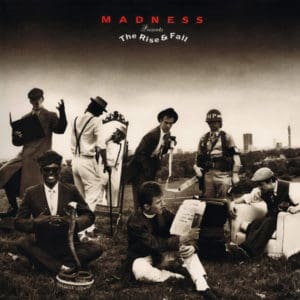
The Rise & Fall (1982)
“It was the first album we made that was an album,” Suggs said of his band’s fourth studio LP, The Rise & Fall. Drawing from New Wave, music hall and orchestral pop as much as ska, rocksteady and reggae, the experimental affair immediately dismissed the notion that Madness were nothing but a great singles act.
The Rise & Fall began as a concept record about childhood nostalgia, and one with Trevor Horn at the helm. But it soon blossomed into something much more thematically ambitious,while after meeting with the band, the super-producer acknowledged they didn’t need him. That proved to be the case on an album that not only birthed the band’s signature hit – the Ivor Novello-winning, jukebox musical-spawning Our House even charted in the States – but was also acclaimed as the 2-Tone revival’s answer to Sgt. Pepper.
The tale of a lunatic asylum escapee, Mr. Speaker (Gets The Word) remains one of the group’s finest comedic vignettes. Blue Skinned Beast – a scathing riposte to Thatcher’s involvement in the Falklands War –proved Madness could get political, while wistful gems Primrose Hill and That Face are about the issues of ageing.
Ignore the unfortunate cod-Indian accent that appears on New Delhi and this could well be their magnum opus.
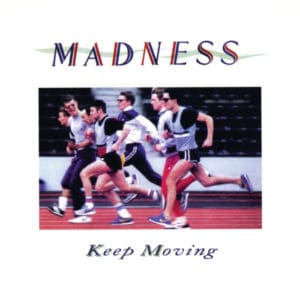
Keep Moving (1984)
In contrast to its predecessor, Keep Moving isn’t held in particularly high regard by the band themselves, with Suggs arguing they’d run out of ideas and Barson – who briefly left to be replaced by journeyman Paul Carrack for its accompanying tour – claiming that it sounds incomplete. However, one could argue that the pair are being a little too self-critical.
Inviting vocal trio Afrodiziak, brass section The TKO Horns and New Wave duo General Public (aka Dave Wakeling and Ranking Roger) into their nutty universe, Madness’ Stiff Records swansong continued to push their sound into unchartered territory. The sophistipop of One Better Day could easily have slotted onto Sade’s Diamond Life, released a few months later. Waltz Into Mischief anticipated the sea shanty revival by a good three decades, while the eponymous opener has echoes of ABC’s The Lexicon Of Love, perhaps a sign of how The Rise & Fall may have sounded had Trevor Horn been on board.
Leftfield Pop
Keep Moving also serves up one of Madness’ greatest singles, even if it did unfathomably break their streak of six consecutive UK Top 10 hits. Fronted by the Bowie-esque vocals of Smyth, Michael Caine is an inspired piece of leftfield pop in which the titular actor – essentially reprising his secret agent in The Ipcress File – repeatedly reminds everyone of his famous name.
Keep Moving is a much brighter listen, too, although as with many of Madness’ sunnier offerings, there’s an underlying darkness. Time For Tea is the harrowing tale of a glue-sniffingschoolboy whose summer holiday escapades take a tragic turn, while the similarly jaunty closer Give Me A Reason depicts a relationship from the perspective of a domestic abuser (“I am the master of this house/ Don’t try to run away”).
Let’s not forget Keep Moving is still the band’s highest-charting album on the other side of the Atlantic, albeit at a remarkably lowly No.109, and even earned rave reviews from previous detractors Rolling Stone.
Still, amid Barson’s first but not last departure, and their proposed sitcom with Ben Elton getting stuck in development hell, it represents the era where the wheels first showed signs of falling off.
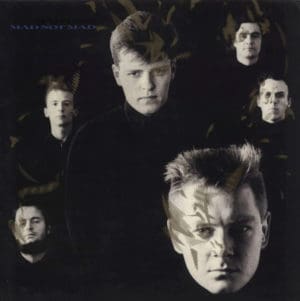
Mad Not Mad (1985)
We must hurry now, time is closing in/ And I’m getting no younger in fact/ Five years closer to my pension scheme.” The opening track on their sixth LP, I’ll Compete suggested Madness knew that they were becoming more susceptible to the fickle nature of the music industry. They were right to be concerned. Mad Not Mad was their first album to miss the UK Top 10, spawned two singles (Uncle Sam and The Sweetest Girl) that failed to crack the UK Top 20 and sold fewer copies than anything that had gone before. Could the absent Mike Barson have been their secret weapon all along?
Regular cohorts Langer and Winstanley certainly seemed unsure about how to adapt to the new pop landscape. The majority of its 10 tracks are clinically immersed in the kind of mid-80s-tastic synths and programmed beats which later prompted Foreman to declaring with Uncut that Mad Not Mad was the most dated-sounding album of their career thus far. Their limp cover version of The Sweetest Girl, for example, sounds staler than the Scritti Politti original released four years earlier.
End Of An Era?
However, Madness’ first LP through their own Zarjazz record label still boasts plenty of fine songwriting. The surprisingly seductive bossa nova of lead single Yesterday’s Men is a wistful meditation on mortality (“Because when you’re told to start how far can you go?/ When your race is run and you already know”), a theme they would delve deeper into the further they developed into elder statesman.
Uncle Sam combines nursery rhyme melodies and calypso beats with – as made more explicit by its World War II-themed promo video – a satirical look at American imperialism. And Burning The Boats sees the band further sharpen their political daggers on an ever-timely faux-Motown number about the Tories’ fondness for privatisation (“The ministry of co-operation/ Are washed and hanging on the line/ There’s a million burning questions/ To set the Thames alight”).
Mad Not Mad, therefore, doesn’t quite deserve the “polished turd” label later given by Suggs during a Radio 1 interview. But there’s a general air of malaise surrounding the record (and indeed one-off farewell single (Waiting For) The Ghost Train) which would prove to be the original incarnation of Madness’ last for a good 14 years.
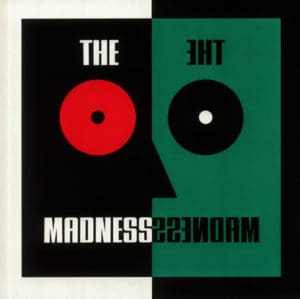
The Madness (1988)
Citing the age-old reason of creative differences, Madness splintered in 1986, with Suggs, Thompson, Foreman and Smyth deciding to form an offshoot that turned out to be as unimaginative as their name.
The Madness, who it is believed produced their eponymous sole album under the pseudonym of The Three Eyes, occasionally showed flashes of inspiration. A portrait of a bride-to-be planning to flee her arranged marriage, I Pronounce You is one of their more convincing detours into Middle Eastern territory, while closer Gabriel’s Horn is an art-pop epic that combines industrial percussion with pounding piano reminiscent of Talk Talk’s heyday.
Had the rest of the album committed to such musical adventurism, then it would no doubt have peaked higher than No.65.
Instead, the quartet – whose vocal duties were shared among Suggs and Smyth – largely plundered a watered-down version of everything that made the real deal so compelling, highlighting how invaluable Winstanley and Langer were. Even appearances from various members of The Attractions, UB40 and The Specials struggle to inject much life into tunes such as In Wonder and opener Nail Down The Days, with the latter’s tinny brass synths seemingly borrowed from an ITV quiz show. Undeniably the group’s creative nadir.
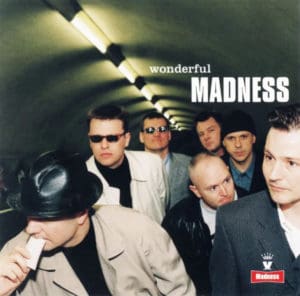
Wonderful (1999)
After Blondie’s Maria reached UK No.1 in February 1999, another blast from the 80s unexpectedly staged a triumphant comeback when Madness revealed their first album to feature the band’s classic line-up in 15 years.
Of course, thanks to the second chart-topping hits retrospective Divine Madness, a series of record-breaking Finsbury Park Madstock! shows and Suggs becoming an unlikely Saturday night fixture on Channel 5’s guilty pleasure karaoke show Night Fever, it never really felt like Madness had truly gone away.
Still, with American acts like The Mighty Mighty Bosstones and No Doubt bringing ska back to the charts, the turn of the century seemed like the perfect time to further remind everyone of their obvious British inspiration. Occasionally, Wonderful wanders a little too far down memory lane, with the cheeky-chappy closer No Money essentially a retread of Our House, while ode to loneliness 4am first appeared on Suggs’ solo debut four years earlier.
Triumphant Comeback
But, for the most part, the band manage to revive their Nutty Boy spirit without falling into the trap of lazy nostalgia. Possibly the jauntiest ditty about alcoholism, Lovestruck proved Madness hadn’t lost their ability to pen an infectious Top 10 in the intervening years. Their James Bond treatment of The Ink Spots’ If I Didn’t Care and the driving chamber pop of Elysiumshowed they still had a few new tricks up their sleeve, too.
Wonderful is perhaps most notable for the band’s dream collaboration with Ian Dury. Having admitted to aping him through parts of their early career, they recruited the real thing on album standout Drip Fed Fred. The rallying cry for a kneecapped East End gangster (“Peace shall not prevail in Purley, came the stark warning today/ From his hospital bed Drip-Fed Fred vowed he was here to stay”) was the last song that Dury recorded before his death in March 2000, a fitting epitaph for his irrepressible Cockney charm.
“So most of the conversation revolves around/ Things that happened 20 years ago,” Suggs sings on the self-referential SaturdayNight Sunday Morning. Wonderful gave everyone something new to wax lyrical about.
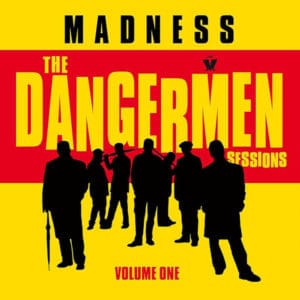
The Dangermen Sessions Volume One (2005)
Madness truly brought their career full circle with their eighth studio album, throwing things back to the covers they first began performing as The North London Invaders in the mid-70s. The Dangermen Sessions Volume One is essentially Madness’ answer to UB40’s Labour Of Love, although we don’t remember the Campbell brothers pretending to be a fictional outfit from Havana staging a comeback 35 years in the making.
Adopting ridiculous pseudonyms such as Professor Psykoticus, Jimmy Oooh and Unnamed (each character also came equipped with their own elaborate backstory), the band pay tribute to various likely suspects (Prince Buster’s Girl Why Don’t You, Lord Melody’s Shame And Scandal, Desmond Dekker And The Aces’ Israelites), with producers such as Steve Dub, Segs and Dennis Bovell providing a further level of authenticity.
But it’s their rocksteady spins on The Supremes’ You Keep Me Hanging On and The Kinks’ Lola, alongside the sole original composition This Is Where, that provide the most intrigue. It’s all perfectly serviceable, but you get the feeling the band had more fun making it than even the most ardent Madness fans had listening to it. The fact that a second session has yet to surface speaks volumes.
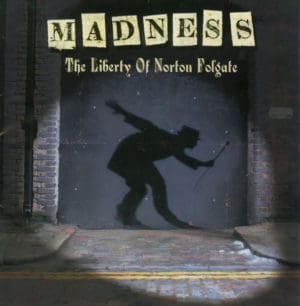
The Liberty Of Norton Folgate (2009)
Coinciding with the 30th anniversary of their official formation, Madness’ most acclaimed album was named after an East London area which up until the turn of the 20th century was governed by St. Paul’s Cathedral. It’s little surprise, therefore, to learn that The Liberty Of Norton Folgate doubles up as a love letter to their hometown, with some gushing critics deeming it as culturally worthy as everything from EastEnders to Ealing Studios.
Opening track proper We Are London couldn’t make the general theme any clearer, guiding us through the version of the city (“Down to Chinatown for duck and rice/ Along Old Compton Street, the boys are nice”) the band had called home for roughly five decades. NW5 is a love song whose origin story, as its title suggests, began in their home postcode of Kentish Town, while Idiot Child is another masterful vignette about a North West London kid consigned to a life of crime by the prejudices of the educational system. Clerkenwell Polkais a crash course history lesson which puts an Islington spin on the Bohemian courtship dance.
Love Letter To London
But it’s the closing title track which best encapsulates the group’s fascination with The Big Smoke. Clocking in at over the 10-minute mark, the mini-suite veers from drinking song to dancehall while simultaneously celebrating the area’s rich history in such a poetic manner you half expect to see Peter Ackroyd’s name on the credits (“The Welsh and Irish Wagtails – mothers of midnight/ The music hall carousel is spilling out into bonfire light”).
The band’s first fully committed concept album isn’t always so blatantly London-centric. In fact, on Africa – sadly not a cover of the Toto classic – Smyth even dreams about leaving Holloway for the burning plains of the titular continent. And Sugar And Spice is a gorgeously bittersweet Squeeze-esque serenade relatable to anyone, no matter if they’ve never even stepped foot inside the capital.
But understandably, it’s the songs where their hometown pride shines through which prove to be most compelling. One could argue that The Liberty Of Norton Folgate is where Madness surpassed The Jam, Blur and even their most obvious musical inspiration, The Kinks, as the quintessential London band.
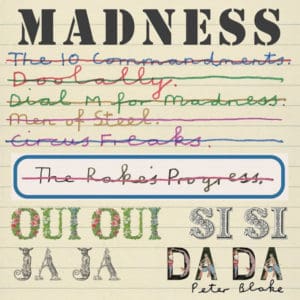
Oui Oui, Si Si, Ja Ja Da Da (2012)
Having performed Our House at both the London Olympics’ closing ceremony and the Queen’s Diamond Jubilee Concert (on Buckingham Palace’s rooftop à la Brian May to boot), Suggs and Co made their return – minus Mark Bedford – to remind the general public that they aren’t always interested in trading on former glories. Well, mostly.
The playful Northern Soul of My Girl 2 is a belated follow-up to their 1979 second hit which initially hints things have turned sour before revealing that it’s (phew) just a lover’s tiff. But elsewhere, Oui Oui, Si Si, Ja Ja, Da Da offers plenty of new ideas, from the mariachi-tinged tale of regret La Luna to the ghostly dub of closing eulogy Death Of A Rude Boy. Never Knew Your Name, in which Suggs pines over the one that got away, even sees the band tiptoeing onto the disco dancefloor.
Langer and Winstanley’s noses may have been put out of joint – Stephen Street (The Smiths) and Owen Morris (Oasis) took on the bulk of production duties – but Madness’ 10th album was worthy of a yes in any language.
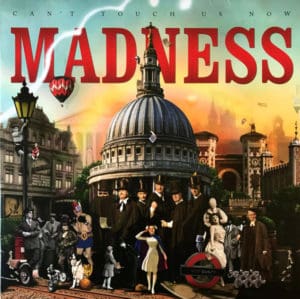
Can’t Touch Us Now (2016)
Madness appeared to deal with the abrupt departure of Smash in 2014 by conjuring up a plethora of similarly larger-than-life, if morally questionable, characters for their most narrative-driven LP yet. Mr. Apples centres on a sanctimonious pillar of the community who fails to practise what he preaches. Pam The Hawk is based on a toothless tramp known for her addiction to fruit machines and machine-gun laugh. And Herbert is an overzealous ex-rugby prop forward who ends up chasing his prospective son-in-law around with a shotgun.
However, the most powerful character study here, Blackbird, is firmly grounded in reality, namely the friendly conversation that Suggs had with Amy Winehouse just days before her untimely death (“Guitar over one shoulder, swirling swagger in her stride/ In a well-appointed pencil skirt, that maybe, just maybe 18 inches wide”). Smash’s absence may have inspired the band to further embrace their roots, with the bouncy ska of Mumbo Jumbo and the title track evoking the first time they really did seem untouchable.
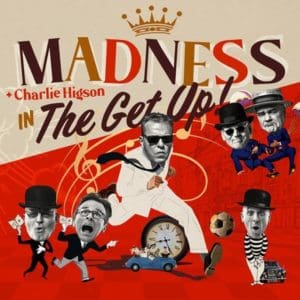
The Get Up! (2022)
A true curiosity in the Nutty Boys’ back catalogue, 2022’s The Get Up! is the recording of the live online experience – part-concert, part-comedy roast, part-vaudeville show – that Madness served up to bored fans during the latter stages of the 2021 Covid lockdown.
Presided over by The Fast Show’s Charlie Higson (as compère Victor Marley), the audio version inevitably cannot compare with experiencing the whole shebang as it was originally intended: in fact, the tendency to interrupt their greatest hits with spoken-word non-sequiturs means The Get Up! is an often-frustrating listen.
True diehards – surely the record’s only demographic – will have no doubt heard the tales from yesteryear countless times before, too. And the lack of an audience within the cavernous London Palladium means that even the funniest quips fall a little flat. Still, the three tasters of the band’s forthcoming studio effort would – at the time anyway – have compensated for all of the familiarity.
Likewise, the inspired routines in which Fine Young Cannibals’ Roland Gift and The Modfather himself, Paul Weller, apply to replace Suggs with their renditions of Concrete And Clayand The Harder They Come respectively. But on the whole, The Get Up! is a prime example of ‘you had to be there’.
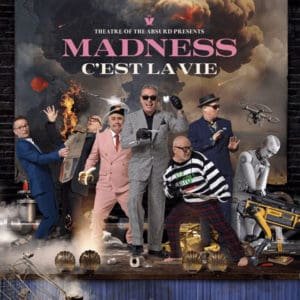
Theatre Of The Absurd Presents C’est La Vie (2023)
Thirteen proved to be a lucky number for Madness when Theatre Of The Absurd Presents C’est La Vie became their first studio effort to reach the No.1 spot, a long overdue achievement for a band who’d been part of the pop fabric for more than 40 years.
Although recorded in a Cricklewood lock-up rather than one of London’s most historic venues, the milestone record has much in common with its live predecessor. As its title implies, it’s a concept album rooted in the tradition of music hall. With British comedic talent and long-time fan Martin Freeman as compère, the album is self-described in Rolling Stone as “the perfect antidote to the chaos of the past few years”, another attempt to lift the spirits of a public deflated and demoralised by the pandemic.
Lucky For Some
Co-produced by Matt Glasbey, Theatre Of The Absurd still makes several references to the latter. It doesn’t take a genius to work out the subject matter of the amusingly titled Lockdown And Frack Off or the pleading Set Me Free (Let Me Be), while the Latin-tinged Run For Your Life addresses the conspiracy theory culture that blossomed with the new age of misinformation (“Take away your DNA/ Learn to live another way”).
But elsewhere, the sextet want us all to forget about the madness of the 2020s by embracing the madness of the past. The Law According To Dr. Kippah takes things back to 1976 with a coming-of-age tale which sounds like Vincent Price covering Visage.
Meanwhile, the inspired closer In My Street, which features strings from composer David Arnold, returns us to the Camden neighbourhood of Our House which sadly appears to have fallen into a state of disrepair (“There’s Turkish drug dealers/ An Irish halfway house/ There’s 10 full black bin bags / Blowing ’round the gaff”).
Ultimately, Theatre Of The Absurd works, and fully deserves its chart-topping status, by fully adhering to the group’s self-imposed principle: ‘Let Madness Be Madness.’
For more Madness click here
Read More: Essential Guide – The Best Of 2-Tone
The post Album By Album – Madness appeared first on Classic Pop Magazine.
... Continue Reading
Becoming Madonna, a new feature documentary, comes to Sky TV

Becoming Madonna, a brand new original feature documentary from Sky Documentaries, charts the star’s rise to pop superstardom.
It is an immersive, archive driven film built around a cache of recently uncovered audio tapes in which a young Madonna reflects on her extraordinary life and career.
With rare footage, unseen photos and intimate interviews with family, friends and collaborators, some of whom have never spoken in a documentary before, the film shows this celebrated singer as we’ve never seen her before.
Incredible Journey
When Madonna arrived in New York City from Michigan with dreams of becoming a professional dancer, it was the start of an incredible journey. This film charts the period 1978-1992 as Madonna dramatically transformed herself from insecure 19-year-old outsider to the most controversial pop star in the world.
These were the heady years during which Madonna came of age as a person and an uncompromising artist. Through her fiery conflicts with the conservative establishment in the 80s and 90s, the film powerfully evokes a time where traditional views on sexuality and gender roles were being audaciously challenged and Madonna was always at the vanguard.
Previously unseen archive sheds new light on the personal tragedies that fuelled Madonna’s drive, re-examining the early death of her mother and those of her dance teacher Christopher Flynn and close friend Martin Burgoyne, both of whom died during the AIDS epidemic of the 1980s.Through their stories, we see Madonna in a new light: smarter, more radical and more vulnerable than anyone at the time gave her credit for.
Enduring Icon
Hayley Reynolds, Acting Director of Documentaries and Factual, Sky, said: “Since her debut in the 80s, Madonna has been a powerhouse in pop music and carved the way for many of today’s most popular artists. This film brings a fresh perspective on an enduring icon and we’re thrilled to be working alongside Optomen to bring her story to Sky audiences.”
Becoming Madonna is produced by Optomen in association with All3Media International. Nick Hornby, Co CEO of Optomen, said: “We’re so grateful to the team of Sky Documentaries for backing us on such a bold and audacious film.”
Becoming Madonna premiered on Monday 30 December on Sky Documentaries and Sky Showcase. The documentary is exclusive to Sky in the UK, click here for subscription details.
Read More: The Rise Of Madonna
The post Becoming Madonna, a new feature documentary, comes to Sky TV appeared first on Classic Pop Magazine.
... Continue Reading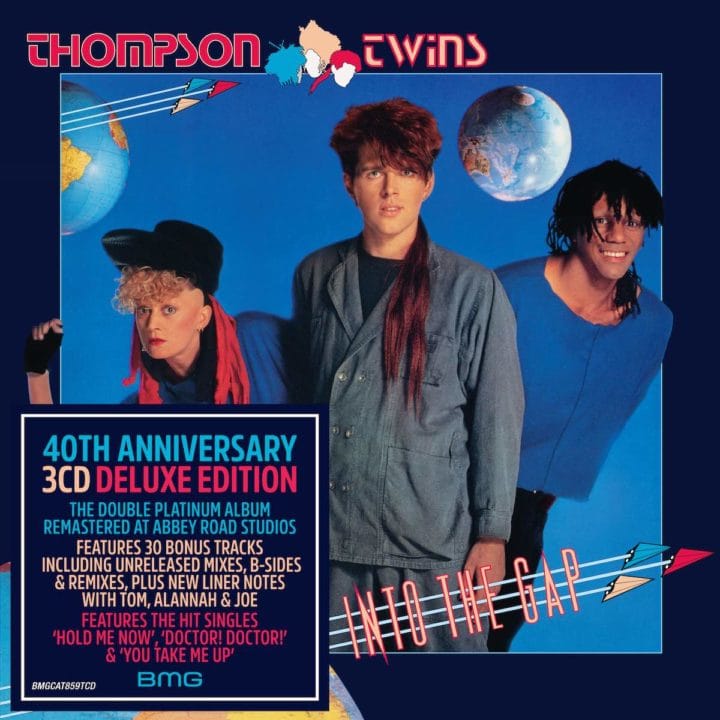
Into The Gap – Thompson Twins interview

In our exclusive Thompson Twins interview, Tom Bailey, Alannah Currie and Joe Leeway share their story together after nearly 40 years…
Pioneers who were a riot of colour and mischief, the group were only ever going to blaze brightly for a brief time. Two of them have left music behind for decades, while Tom Bailey only returned after years away from pop. Here the trio reveal how squats, Grace Jones and fire extinguishers helped create a transatlantic phenomenon.
Before we go any further, let’s make one thing clear: Thompson Twins are not getting back together. And when Classic Pop was told that all three Twins would be up for talking about the 40th anniversary of their sole No.1 album, Into The Gap, we were happily stunned.
Now an artist, Alannah Currie has spoken to us just once about her pop life, back in 2017, moving away from music altogether since her final album with Tom Bailey as Babble in 1996. Joe Leeway is even more distant from pop – a therapist in California for 20 years, Joe hasn’t been on stage since 1986, when he rejoined Thompson Twins for one show in L.A., a year after quitting the group. Leeway doesn’t seem to have publicly spoken about music once in the intervening 38 years. Yet here they all are.
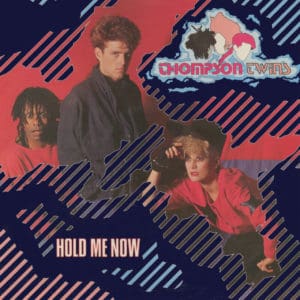
Designers Of Pop
Across two Zoom interviews, plus Leeway by phone, the band all speak with genuine warmth and a little bemusement that they managed to be international pop stars for a couple of years.
But getting back on stage together? Currie sums up the mood best: “We are all old,” she laughs. “We’re grandparents, nearly 70. It’s nice that people still enjoy our songs. But doing more Thompson Twins? No. I’m very much of the belief that things have their time.
“I don’t go to see bands who I loved 20 years ago, because part of the joy of live performance is in the potential, in artists who quiver with the feeling of: ‘What are they going to do next?’ We felt old after Into The Gap – and we probably were. We were 30 then. Who wants to know anybody over 30 in pop music? Ugh! Other people came along and took over. We’d had our time.”
It’s a happily irreverent attitude that entirely fits Thompson Twins’ original ethos. Tom describes their intentions to become “designers of pop music”, rather than a regular band, after the initial seven-piece line-up made two inventive but chaotic albums, A Product Of and Set.
Breaking All The Rules
“It was a different band with different aims and objectives,” notes Bailey. “It was very much a band of musicians, where every song had to find a role for the two guitarists, the bassist and so on. That all ended on Quick Step & Side Kick, when I said: ‘No rules anymore.’ Probably partly unconsciously, we broke down the assumptions that a band had to be four white guys standing there. Once it was me, Alannah and Joe, our records didn’t have to be anything, apart from good songwriting and good recording.”
Although 1983’s third LP Quick Step & Side Kick and its hits including Love On Your Side and We Are Detective lived up to their grand pop designs, the trio’s background was anything but pop. Like Bananarama, Bronski Beat and Culture Club, Thompson Twins 2.0 formed via London’s squatting community. Joe and Tom met at college in Sheffield, where Bailey remembers them “hanging out at the snack bar, waffling nonsense away at each other.” They lost contact, reuniting when Leeway was working at The Young Vic theatre in London.
Joe recalls: “I was living in a bedsit in Fulham and met Alannah at a party. She said: ‘There’s a squat opposite me.’ Within a week, I had a whole cottage opposite Alannah in South London.” Currie takes up the story: “Joe told me that he had mates in a band who were moving down to London. The next thing, Thompson Twins turned up in their van from Sheffield. Joe was really flamboyant and theatrical, full of crazy ideas. Tom was very quiet, a quite serious person. We were great friends for a year before getting it together as boyfriend and girlfriend.”
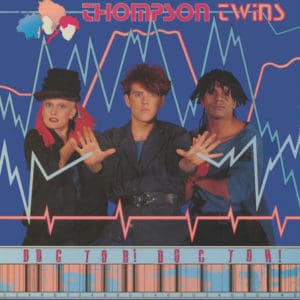
Can’t You See I’m Burning
Initially becoming the band’s roadie, Leeway told Bailey that he “quite fancied playing bongos and congas,” while Alannah tried one writing session with the original line-up, but remembers: “There were too many people, too many ideas. I just thought: ‘This is a nightmare.’”
“The squatting community enabled the band,” enthuses Joe. “Not paying rent, you could use the money for rehearsals instead. Next door to us, at any one time you’d find The Slits or Rip Rig + Panic. The downside was that we couldn’t get served in the pub, as the tabloid perception was that squatters were all heroin addicts. The world thought we were disgusting, but we had independence.”
Once the line-up was slimmed down to a trio who didn’t need to have instrumental parts written for them in every song, Quick Step & Side Kick initially established Thompson Twins as an electronic trio. “I can’t believe how easy it was to write pop music then,” laughs Tom. “I find it more difficult to write pop now. Perhaps you run out of the most obvious ideas. You learn more tricks the more songs you write but, particularly around Into The Gap, it felt effortless. We were a good team, which peaked on that record.”
With Bailey in charge of music, Currie taking care of lyrics and videos, and Leeway overseeing the live shows, they soon became a workaholic co-operative, not even choosing to take Christmas Day off. Alannah recalls: “Our songs came from storytelling. The three of us would get together to tell stories, gather ideas, then sift through them, editing and editing. After Quick Step & Side Kick, I understood that the song found you as much as you found it. We played with humour a lot, taking quite complex ideas and translating them into little nuggets of pop.”
Pioneering Trio
Having not been together in almost 40 years, it’s now overlooked just how pioneering Thompson Twins were. Alannah is still a rarity, as a female musician writing lyrics for a male singer, in a band who were male/female and of mixed ethnicity. The trio were so forward-thinking and forward-looking that Currie admits there were suspicions they’d been assembled by a record company. She says: “We were completely who we were: three utter misfits and weirdos. Somehow, it worked. Being brilliant mates helped, as we got off on each other’s fun and influences.”
Joe adds: “We were a perfect combination: one black, two white, with red, yellow and black hair. We could speak to different cultures. I’m pretty sure I was the first musician to have cultural dreadlocks, that I was the first who wasn’t a reggae person.”
The Twins’ look was immortalised by veteran sleeve designer Andie Airfix, who created the trio’s cartoon logo, based around their multi-coloured hair. “Pop music has to have a lightness and ease to it,” considers Tom. “It has to be easily absorbable and consumable. Andie’s three cartoon heads logo was a success the same way The Rolling Stones had their lips. It doesn’t sum up the band, but it gives you a way into it. I’ve seen lots of people with the logo tattooed on their arm at my tour, which is remarkable.”
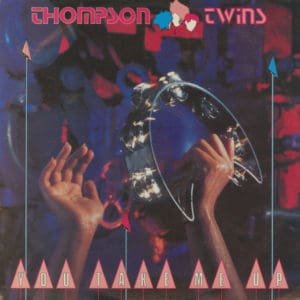
You Take Me Up
After Quick Step & Side Kick had reached No.2, kept off the top by Thriller, the trio were given the perfect foundation for what came next with Hold Me Now, a make-up ballad written in just 25 minutes after a row between Bailey and Currie. “Everyone agreed: ‘Wow, you’ve got a hit song there!’,” smiles Tom. “There’s a lot of hubris and bravado around pop groups, so we took that with a pinch of salt. In this case, it turned out to be true.”
Thompson Twins were helped in their pop quest by producer Alex Sadkin. Hired for his work with Bob Marley and Grace Jones, he was the perfect foil to hone their anarchic side. “A nice man, very calm,” reflects Alannah. “Alex was instrumental in helping us get our sound together, as he was musically very open. He asked what I was going to do and I told him that I wanted to play a fire extinguisher. His response was: ‘Fine with me, let’s get the fire extinguishers out.’ Alex made us sound so cool. We didn’t sound anything like Grace Jones, but that was Alex: he took the best of everyone and put it together for them.”
Into The Gap saw the previous album’s all-electronic ethos disappear, broadening their sound by bringing analogue instruments back. “We’d got a foot in America,” explains Bailey. “We noticed there was still a big rocktastic flavour in American tastes, with pure synth-pop still rejected. They wanted more of a classic rock sound. Adding a few guitars was part of the realisation we needed to broaden our audience in America. You’ve got to stick to your guns, but we allowed ourselves that freedom, having been more rigid on Quick Step & Side Kick.”
Top Of The Pops
The resulting success was starting to feel natural, as Leeway says: “The first time we did Top Of The Pops, we were shocked that anyone was waiting outside for us. Within a couple of years, going on TOTP was as familiar as going round your gran’s house. It was the same with travel. I’d never been on a plane before we went to the Bahamas to first work with Alex. Growing into that life, becoming more confident, allowed us to do more.”
Having a band member in charge of their concerts helped Thompson Twins’ arena shows become a foretaste of modern pop spectacles. “We were always theatrical,” Joe emphasises. “Our key thought was: ‘What’s the deal with pop?’ Well, pop is about image, and that translated into our live show’s spectacle. They were an event, with spotlights and searchlights. I wanted people to feel desperate for us to come to their town.”
Leeway believes that the Twins’ invincibility first faded when they didn’t appear on Band Aid. Their management simply didn’t inform the band, then living in France, that it was happening. “Obviously we’d have done it if we’d known,” he sighs. “A little decision like that completely upset our momentum in England. Paul Weller called us out, saying: ‘They’re tax exiles, that’s why they didn’t do it.’ The perception was that we were too big for our boots. We did the Band Aid Top Of The Pops, but it wasn’t the same. The horse had already bolted.”
It didn’t help that the trio were creatively burnt out. Currie remembers: “We didn’t have one idea in our brains, but the label wanted us back in the studio after three weeks. We should have said: ‘Go away, see you in six months.’ Instead, we said something pompous like: ‘We’ll write if you hire us a castle in Ireland.’ Suddenly, we were in a castle in Ireland.”
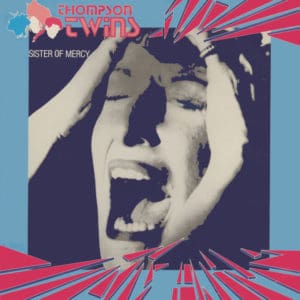
Here’s To Future Days
Alex Sadkin was busy working with Arcadia, so the trio tried producing Here’s To Future Days themselves. Alannah admits: “It wasn’t good enough, so we redid it with Nile Rodgers. He wasn’t the right person but, fundamentally, we didn’t have the songs or the energy.” Tom adds: “I’m sure Nile would agree that, at the time, he was scraping along the barrel of drug and alcohol problems. People were begging me to let Nile off the hook, to give him time to recover. But we were under immense pressure to finish the record, so that wasn’t easy. I still fully enjoyed working with Nile, who’s an extremely sophisticated musician and sophisticated person in general.”
Joe announced he was leaving at the end of the album’s tour: “I tried making music on my own, but it wasn’t the same,” he states. “Thompson Twins was working with friends. When I was with other musicians, it didn’t gel, so I re-educated myself and came back to the real world, where life has worked out for me.”
After what Alannah calls the “terrible” Close To The Bone, Thompson Twins’ final albums as a duo, Big Trash and Queer, are unsung gems in tune with rave culture, before two LPs as Babble were even more hardcore.
With Tom and Joe back in touch thanks to Into The Gap’s reissue and wanting to catch up properly, all three Thompson Twins are happily friends again: Currie and Leeway had remained mates. They might not get to play live any time soon, but their bond as Twins is strong again five decades on. As Joe puts it: “It was only seven years of my life and there are so many other ways to express myself now. But what an experience. The momentum was just incredible. I was plucked into the pop life and all I can say about it is: ‘Thank you very much!’”.
Order Thompson Twins – Into The Gap 40th Anniversary Reissue here
The post Into The Gap – Thompson Twins interview appeared first on Classic Pop Magazine.
... Continue Reading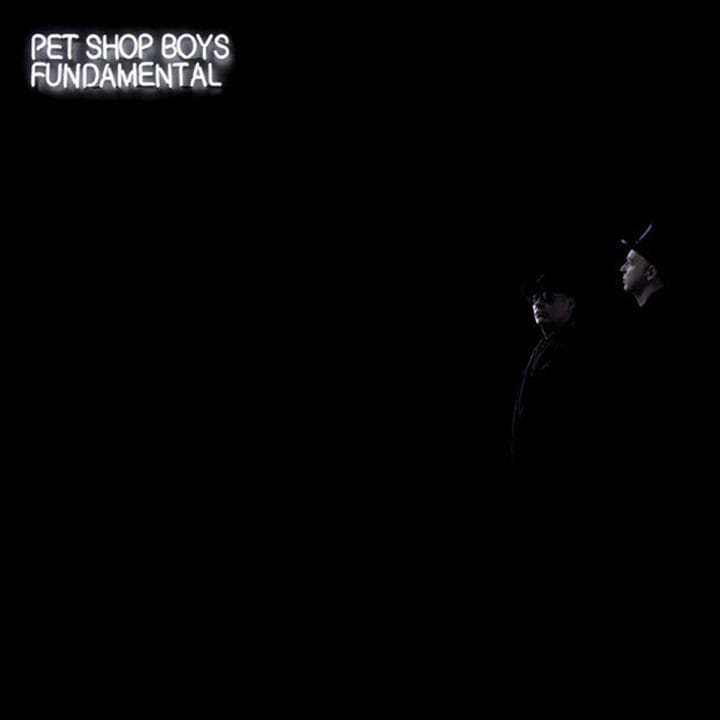
Album Insight: Pet Shop Boys – Fundamental

Twenty years on from Please, the Pet Shop Boys went back to their roots by teaming up with the most in-demand producer of the 1980s, Trevor Horn, for Fundamental
The Pet Shop Boys and Trevor Horn? As soon as the producer was announced for Neil Tennant and Chris Lowe’s ninth studio album, the general reaction was, “Of course!” followed quickly by, “Sorry, why has it taken this long?”
Of course, the three had worked together before, on the Introspective tracks Left To My Own Devices and It’s Alright way back in 1988, but Fundamental would be the first full-scale collab between these titans of synth-driven pop. Of course, when the news first broke, it seemed like a Classic Pop reader’s dream team – the writers of West End Girls and It’s A Sin teaming up with the production mastermind behind Frankie Goes to Hollywood’s Relax and ABC’s Poison Arrow. How could it fail?
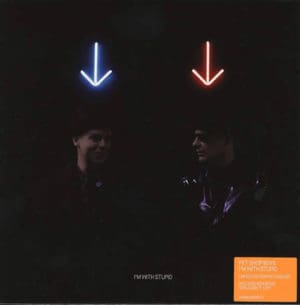
Horn Magic
Of course, not many of Horn’s clients are as artistically independent as the Pet Shop Boys. So how would this collaboration work? Whose signature sound would win out? Would this be a Neil and Chris album with a smattering of Horn magic, or an orchestrally-drenched Trevor Horn record with added Tennant and Lowe? In the end, it would be both, and one of the most satisfying records in both artists’ vast catalogue.
The writing for what would become Fundamental began shortly after Christmas 2004, and by April 2005 Neil and Chris had amassed 16 songs, of which 12 would find their way onto the album. Their initial plan, however, was that their ninth long-player would be, in Tennant’s words, “a very minimal electro dance kind of album”, but then “out of nowhere came all these epic songs.” Clearly, if you’re wanting something spare and minimal you don’t ask the man behind Frankie Goes To Hollywood and Propaganda to produce it, but if your songs need the kind of grandiose orchestration that Neil and Chris were hearing in their heads, then there was only one man to approach.
“[Neil and Chris] generally have a clear idea of the kind of record they want to make,” the veteran producer explained to interviewer Chris Payne in 2016. “Pet Shop Boys are really good with record producers – they understand record producers, they understand their function and that does help, when people understand what it is that you do.”
I’m With Stupid
The duo had already recorded much of the album as what Neil described as “quite sophisticated demos” before Horn came on board. The one-time Buggle would end up working on the album between May and November 2005.
The first taste the public had of the Boys’ ninth offering was just a few weeks before the LP dropped on 22 May 2006. I’m With Stupid was released on 8 May and, no doubt helped by a video featuring the then-massive stars of Little Britain, Matt Lucas and David Walliams, it secured the boys their highest chart hit (UK No.8) since 2000’s You Only Tell Me You Love Me When You’re Drunk.
“I’m With Stupid comes from that slogan from the 70s, that you’d get on one of those T-shirts with an arrow pointing at presumably your best friend or your partner or your wife or your husband or something,” Neil said on the Fundamental interview CD promo. “I always found that funny to be honest, because it’s a very simple, insulting idea, and I’d always had this for many years down as a song. I just thought I’d base the story on Blair and Bush [the Iraq War had begun in March 2003]. It’s about someone having a relationship with someone and all their friends think how ghastly he or she is for going out with this frightful person because he or she is so stupid.”
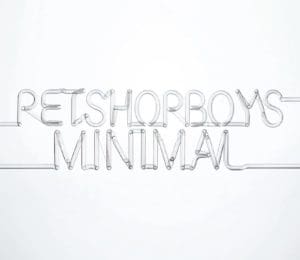
Reflection On The World
I’m With Stupid would be typical for the album in reflecting real-world events, but like 2002’s I Get Along (which was inspired by the personal and political fall-out between Tony Blair and his spin-doctor-in-chief Peter Mandelson), it’s all in the ear of the beholder. I’m With Stupid may have been inspired by then-Prime Minister Blair being apparently in thrall to the neo-hawk US President George W Bush, but it doesn’t hammer the point home. Blair is never referenced, nor Dubya. So unlike many more songs from the time that were motivated by the War on Terror, I’m With Stupid hasn’t dated and is able to remain open to interpretation.
There are, of course, many classic Pet Shop Boys compositions on Fundamental, but there’s also a rare example of a song by another songwriter, in this case Diane Warren. Numb isn’t a cover, as its first ever airing was on Fundamental, but this high-flying ballad had at one point been offered to Aerosmith, who turned it down. Warren was of course known for her showstopping production numbers, and her songs usually needed a stadium-filling diva voice, not Neil Tennant’s droll delivery. Yet it’s the tension between the song’s intent and the singer’s poker-faced interpretation that makes it unique.
“I was really shocked when they said they wanted to do it,” Horn revealed to Chris Payne in 2016. “I was just surprised, and it’s also the only time I’ve heard Neil sing in American. He normally sings in English. I pointed this out to him but he didn’t seem concerned. There’s a moment in that song where it goes from being totally electronic to being totally played. When he goes ‘I wanna be numb’… On the word ‘numb’, it shifts from being machines, sequencers and programmed drums to being everything real.”
Social Commentators
Fundamental would be released on 22 May 2006, with the liner notes dedicating the album to two executed Iranian gay teenagers, Mahmoud Asgari and Ayaz Marhoni, who were hanged in the country’s Khorasan province on 19 July 2005. Following I’m With Stupid, two further singles were released from the record – Minimal (UK No.19) and Numb (UK No.23), with the LP itself entering the Albums Chart at No.5.
“The album’s title seems appropriate,” commented The Guardian’s Alexis Petridis, “focusing on New Labour’s trials has reconnected the Pet Shop Boys with something of their essence. Their image as pop’s arch-ironists has obscured their abilities as incisive social commentators.”
Other reviews were similarly warm, with Pitchfork opining: “Fundamental, as cleverly titled as any of the eight albums that preceded it, should be a prime moment for this duo, and it is without question a grand improvement from their most recent work. Their electro-disco is back in fashion, which lets them return to, umm, fundamentals. Working again with 1980s star producer Trevor Horn, they make tracks like Integral pop with a grandiose synth drama half-worthy of Frankie Goes to Hollywood.”
Awarding the record four out of five stars, meanwhile, Slant wrote: “Fundamental is an album that begs us to look beyond the surface of things, to the impulses that inspired them, to the results they’ve wrought, to the elements that make them up, and finally, to what they mean. Fittingly, its own surface is rather deceptive, an alternately orgasmic and slow-burning chameleon that threatens to charm and/or horrify at the start of each new verse. Truly, this is born out of the fractious times we live in.”
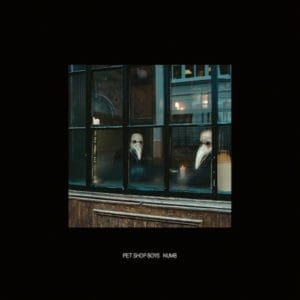
Masterful Work
Fundamental is an album that remains close to most Pet Shop Boys fans’ hearts. Of their 21st century albums, it’s the one that most resembles their Imperial Phase output, and, artistically speaking, proves a seamless marriage between Neil Tennant, Chris Lowe and Trevor Horn. From the splendour of The Sodom And Gomorrah Show to the throb of Integral to the warm balm of Luna Park, it’s a masterful record that recalls the Boys’ early days while also embracing the present.
At the time of Fundamental’s release, the Pet Shop Boys were celebrating the 20th anniversary of their debut album, Please. By rights, they should have been obsolete by 2006, a middle-aged pop band with little relevance to the contemporary music scene. Yet at the same time as honouring their past, Neil Tennant and Chris Lowe also proved how absolutely contemporary and relevant they remained.
The Tracks
PSYCHOLOGICAL
An unusually subdued opening for a Pet Shop Boys (and indeed a Trevor Horn) album, Psychological’s punchy synths recall early Kraftwerk. The track epitomises a strand of Neil and Chris’ writing, however, in being both eerie and danceable at the same time.
THE SODOM AND GOMORRAH SHOW
Horn’s circus-like production on Fundamental’s second track is the first proof of quite how fertile this creative marriage would prove. Giddily infectious, it’s astounding that this wasn’t chosen as a single, though it’s difficult to imagine lyrics like “Sun, sex, sin, divine intervention/ Death and destruction/ The Sodom and Gomorrah show/ Is a once-in-a-lifetime production” sitting comfortably on This Morning.
I MADE MY EXCUSES AND LEFT
This simmering ballad’s aching melancholia recalls the mournful It Couldn’t Happen Here, one of the great never-singles in Neil and Chris’ catalogue. A welcome change of pace after the exuberant The Sodom And Gomorrah Show, this is one of the stand-out tracks on the album.
MINIMAL
There are shades of New Order in this one, despite the of-its-time use of the Vocoder. Trevor Horn, in an interview from 2016, told how he let Peter Hook know his trademark sound had informed a Pet Shop Boys number. “I’ve just ripped you off on a Pet Shop Boys track,” ‘he told the bassist. “I’ve kind of copied you, because that thing that you do is really good.”
NUMB
This Diane Warren-penned number had originally been procured by the Pet Shop Boys to be one of the new songs on their 2003 compilation PopArt: The Hits. In the end, Numb was tracklisted on Fundamental and would be one of its three singles. It really shouldn’t work, but bizarrely does.
GOD WILLING
Lasting just one minute 17 seconds, this can barely be called a song. Sounding as if it was a portion of a number that was started and never finished, it’s a mystery as to why this was ever included in the LP.
LUNA PARK
A favourite of Trevor Horn’s (“I always like the doomy ones,” he said), this gorgeous ballad appears to take aim at America, a land of cheap thrills and rampant commercialism: “On the shooting range/ The plastic prizes never change/ So make your mark on Luna Park.”
I’M WITH STUPID
It may have been inspired by the relationship between Tony Blair and George W Bush, but the lack of specificity allows Fundamental’s debut 45 to have a broader meaning, that is when someone you know starts to date, or hang out, with someone of staggering stupidity. Hey, we’ve all been there.
CASANOVA IN HELL
Tennant revealed that this one is about loss of sexual potency. “It’s about growing old,” he said on the Fundamental interview CD promo. With lyrics such as “Her sharp suggestion/ He couldn’t get an erection/ Came as a shock/ He finds himself a laughing stock”, it’s a blackly comic look at ageing lotharios.
TWENTIETH CENTURY
How very Pet Shop Boys to write a song titled Twentieth Century once we were actually out of it. A pulsating dancefloor filler, it’s a number that Madonna would give her teeth for. Crazy this wasn’t a single.
INDEFINITE LEAVE TO REMAIN
No, this isn’t a very prescient song about Brexit, but is instead about UK immigration reform, with Tennant singing, “Seeing you here/ You’re my nation/ This is my application/ Give me hope/ Keep me sane/ Give me indefinite leave to remain.”
INTEGRAL
Fundamental’s closer, which was inspired by the Identity Cards Act of 2006, wasn’t actually released as a single until 2007 when a remixed version of the song was put out to promote the duo’s fourth remix album, Disco 4. The single peaked at No.197 in the UK.
Order here
Read More: The Pet Shop Boys’ ‘Imperial Phase’
The post Album Insight: Pet Shop Boys – Fundamental appeared first on Classic Pop Magazine.
... Continue Reading
The Human League Interview

When Classic Pop met for its Human League interview in autumn 2024, Philip Oakey, Joanne Catherall and Susan Sulley offered a remarkably candid insight into their usually private world…
It’s 1.59pm on 28 August. Classic Pop is due to meet The Human League at the bar of the Mercure Hotel in Sheffield, chosen because of renovation work on the group’s studio 10 minutes away in the city centre. None of the group are here yet. Their publicist gets up to have a quick look outside for any impending arrivals. As he does so, at 2pm exactly, Philip Oakey, Joanne Catherall and Susan Sulley stride through reception together. It’s the single most impressive way to enter an interview that Classic Pop has ever seen.
“We come as a team,” smiles Joanne, aware The Human League’s arrival is every bit as choreographed as walking onstage: they’re dressed as chicly as if playing a festival, too, rather than for an upscale chain hotel bar.
We gather on two sofas, your reporter and Philip opposite Susan and Joanne, who almost immediately crack up at a guest walking through the otherwise empty bar in his dressing gown. “I know he’s here for the sauna,” says Susan, recovering her composure. “But that looked mad. And the sauna here is shit.” It sets the tone for the next 90 minutes: The Human League might want to treat a rare interview as a performance, but they’re far too unguarded and willing to let people into their world to maintain any real distance.
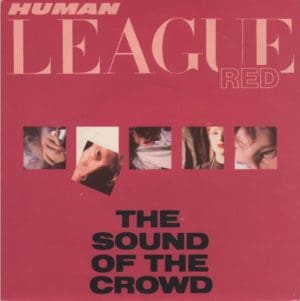
Stage-Ready Team
That the trio look stage-ready doesn’t mean they’re in any kind of uniform. Joanne’s long dark hair is swept back over a black-and-white patterned blouse. Susan – long nails to die for – is in plain black. Then there’s Philip: small neat black beard, shaved head, purple shirt and immaculate black leather jacket. After a summer of festivals, they all appear match-fit. In short, they look exactly how you’d want The Human League to look.
“We’re not the sort of group who lets somebody come in and say: ‘You’re all going to look like this.’ That’s not us,” says Joanne of The Human League’s appearance. “We’re a group of individuals who are collectively The Human League. We look how we want to look. People have tried to style us, but they didn’t get on at all. We are what we are. We always have been.”
Philip believes the group were fortunate they were signed to Virgin: “They weren’t dictatorial, and that was part of their image, when a lot of record companies thought it their right to tell people what to do and how to dress.”
It meant that, once Joanne and Susan joined for Dare, they could present themselves how they wanted. “Part of it was money,” emphasises Catherall. “We didn’t have much money, so we just wore what we wore.” Sulley nods in agreement, adding: “How we looked on Dare, that was literally all the clothes we had. The dresses in the Open Your Heart video were just ones that we’d bought separately from Wallis.”
That ethos has remained in the subsequent 43 years, though Susan clarifies: “We discuss colours. It might be: ‘How about red for this tour?’ or one of us will see something and say: ‘How about this for that part of the show?’ But stylists? No.”
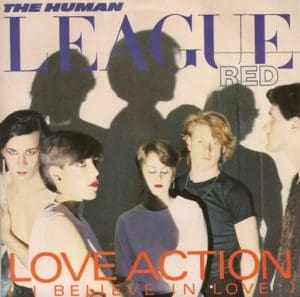
Imposter Syndrome
It’s not quite true that The Human League are what they’ve always been. Oakey – imperious demeanour with vocals to match, absolute bundle of self-doubt underneath – has finally begun to accept what all right-thinking music fans have known since Reproduction: The Human League are as good as it gets.
“I’ve always had this vision that we’d fail,” he frets. “I’ve only got over that in the last 10 years, since the touring side has built up nicer than we ever expected. I always thought I’d end up in Sheffield, walking around with my possessions in a carrier bag, having made a fool of myself. I expected people to laugh at me and say: ‘There’s the fool who thought he was a big popstar.’ I’m only very recently done thinking that.”
Joanne throws a cautionary look: “When Philip says he thought he’d be walking the streets with a carrier bag, that’s a little far-fetched,” but Philip responds: “It really isn’t.” He mentions a disgraced local Sheffield celebrity who “ended up walking around Broomhill, possessions in a bag,” insisting: “I thought that would be me one day.”
Sulley and Catherall are equally uncertain about their status, the latter admitting: “I still have awful dreams about when we’ll be found out, thinking: ‘When is this going to end?’” Susan agrees: “That worry will never leave me. I worry this is all going to stop, and reality is going to hit me straight in the face.”
None of this is delivered as a big confessional. The Human League don’t want you to feel sorry for them. Their attitude is more that none of this should be taken remotely seriously. They’re tremendously entertaining company… The Human League are not, God forbid, earnest rock musicians.

Music For The Masses
Discussing their forthcoming arena tour, Oakey says of planning their setlist: “We’ve got hits we have to do, because we’re not trying to alienate people: we’re not Tin Machine. We want to please the people who’ve been our supporters for decades.”
Joanne continues: “We’re not going to radically alter a song so that people go: ‘But that’s not what I’ve come to hear.’ We’ve all been to shows like that.” Philip laughs: “We’ve toured with people like that. But they’re musicians. They want to prove they’ve ‘advanced.’ No thanks. None of us are musicians.”
Philip Oakey pronounces “musicians” the same way anyone else would pronounce “bin juice”. Later, when Susan discusses the less glamorous side of the music industry, she stumbles over her words when saying: “I know it’s meant to be all rock’n’roll, but, well, ok, not ‘rock’n’roll,’” as Oakey immediately shoots Classic Pop his one frankly terrifying look of ‘I’m Philip Fucking Oakey, mate. I made Dare, remember?’ Every word is very sternly delivered as he thus announces: “Don’t. Ever. Call. Us. Rock. And. Roll.” Consider it noted. As Joanne says: “All three of us have always liked pop music. We want to make pop music. Pop music is a certain mood, and that is not: ‘Let’s put some drum and bass into it to make it sound modern.’”
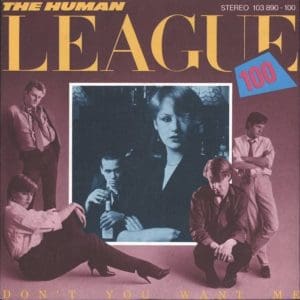
Tour De Force
That the live side of The Human League has become so important still feels slightly mysterious to a group who didn’t start playing shows properly until Octopus in 1995. All three are still mortified as they recall their first tour together for Dare. Joanne recalls: “We did one tour and Virgin went: ‘Guys, don’t do that again.’ It was: ‘That was really bad. People don’t want to see that.’ We toured again for Crash, but that was just as bad.”
Still the trio’s manager 30 years on, Simon Watson, urged the League to work out how they’d feel comfortable onstage once Octopus returned them to the charts. “We’d been quite punk about not playing live,” remembers Philip. “Being told: ‘You’ve got to learn how to do this,’ it petrified us. But it changed everyone’s viewpoint. We worked our way up, playing four down the bill in the States to dance acts.” Susan: “We needed to work our way up, because we were terrible at first.”
Sulley explains: “This coincided with a time when we were supremely unfashionable. We’d be in the Midwest of America, thinking: ‘What are we doing here?’” While The Human League rightly headline arenas and festivals back home, Oakey believes parts of the States are still reticent to the group’s charms. “I’m trying to think of where we fit in America,” he considers. “Glam was never a thing there, as it was treated more like metal. Marc Bolan only had one American hit, and it can feel like that for us, too. Places like New York and Los Angeles get us, but sometimes people aren’t ready for it. And if you’re not ready for us, people just look at you and wonder why we’re doing what we do: ‘Why are they changing costumes? What is this?’”
Dare To Be Different
Nearly 30 years on, touring is mostly a blast. “It’s not a bad job,” laughs Susan. “I get to go away with my mates for a few weeks, and then I get to play onstage in front of all these people.”
Playing live has even made Philip appreciate Dare. Yes, reader, you are probably well aware that Dare is up there with the Pyramids and the moon landings. Mention Dare to Oakey, however? “I’ve always thought it’s a bit bleak.” WHAT? “When we last played Dare on tour, I began to see your view a little more.” Phew.
Catherall says: “It’s weird to hear Dare in full. Obviously, you’ll hear Love Action and Don’t You Want Me on the radio. But Radcliffe and Maconie played Sound Of The Crowd all the time, and it sounded really weird. It made me think: ‘How did we get away with that?’” Philip smiles: “I agree. Sound Of The Crowd is one of the weirdest singles to have ever done well. It’s not O Superman. But it is weird.”
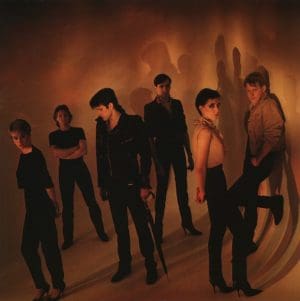
Top Of The Pops
Where even The Human League agree that The Human League were geniuses in the lead-up to Dare was in bringing Joanne and Susan into the group. (Never “band” – The Human League call themselves a group.) After Martyn Ware and Ian Craig Marsh scarpered to become British Electric Foundation, it was inspired of Oakey to ask two young students spotted on the dancefloor at Crazy Daisy’s in Sheffield to become co-conspirators in storming Top Of The Pops.
The big question is: how did Philip know that The Human League needed two total newcomers in order to make a masterpiece? “I did it precisely because it was a leap,” he explains. “I wanted an innovation and thought we should get someone new, and I wanted to get a singer instead of a guitar. We hadn’t bargained on getting two people instead of one, but here we are.” Referring to cult author China Miéville’s alternate viewpoint novel The City & The City, Philip goes on: “Once you start thinking of having two people, you’re in China Miéville territory. Or a Twix. If I ever write another song, it’s going to be about China Miéville’s favourite chocolate bar.”
Together Forever
That the trio are still together, and still clearly proper mates, is something that couldn’t have been predicted in 1981. “I thought this would only last two years, maybe three if I was lucky,” insists Sulley. “Becoming long-term was never the plan.”
For all their self-deprecation, the trio are proud they’ve lasted, as Joanne reasons: “There are steps along the way that can look like mistakes. In the end, all those steps are probably the right ones. I haven’t got a limousine waiting outside this hotel, and my car hasn’t passed its MOT. But you can sell your soul to the devil and give up your integrity. We have kept our integrity.”
Staying in Sheffield has been key to that integrity. Pleasingly, Philip and Martyn Ware are on good terms these days. They had lunch together shortly before lockdown, as Oakey reveals: “I thought lunch would become a regular thing. It didn’t quite, but Martyn doesn’t live in Sheffield, so it’s hard to find time.”
At their height, The Human League were advised to leave Sheffield to become tax exiles in Jersey. “I had crying sleepless nights about the prospect,” Joanne remembers. “We all thought: ‘Why would I want to live in Jersey?’ We didn’t even have any money – management insisted that we would if we went there.
“We’ve never tried to do a tax dodge. I look at people who get caught out and I just think: ‘Why?’ We’re all very straightforward, working-class people who want to support other working-class people by paying our taxes.”
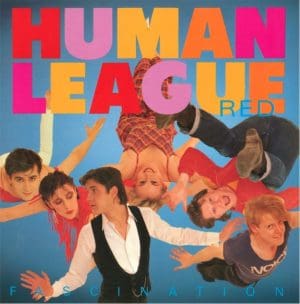
Rise Of The Machines
In the early days after Susan and Joanne joined, they had a manifesto pinned to their studio. Philip can’t remember what it stated, claiming: “It was probably: equality, fraternity and analogue synthesizers.” He’s joking, yet the fraternity has stayed in the group. So have the analogue synths.
Oakey has lived in the same house in Sheffield all his adult life: you can see it on the inner sleeve of Hysteria. The 1986 documentary Private Eyes shows the group at Philip’s home, when he and Catherall were a couple. There’s even a Sinclair C5 in the garage: “That went at the same time as my last motorbike,” he reveals. “I didn’t get to drive it much. I drove it into the garage door and it stopped working.” Now, he describes his home as “a Steptoe’s yard of modular synthesizers – I only drive a Skoda, but I’ve got a collection of really nice synthesizers.”
Asked if there’s a dream synth he doesn’t yet own, Oakey immediately replies: “A Roland System 700,” as Joanne tuts: “Oh good lord… Every single day on tour, there’s a point where Philip, Dave our studio manager, and Graham in our crew will sit there on their phones, going: ‘Have you seen this? Someone is selling an SP404!’ Me and Susan will look at each other, because it’s the same every single time.”
The fact Philip owns so many synths leads to an obvious question: is he using them to write new music? It’s been 13 years since The Human League’s previous album, Credo, of which Oakey considers: “We should have made it a little happier and poppier. That is entirely my fault, as my aim was to do a synth album that sounded like synths.”
Moving Forward
On the prospect of future music, Philip explains: “I write lyrics down every couple of days. I’ve got a little arpeggio going on a synth I’ve had for about three months that I’ve not recorded yet. Finishing a song? Things get in the way a lot now.”
Philip is honest that there isn’t the motivation to get an album made anytime soon, saying: “There isn’t the drive to do it when you know it isn’t going to make you any money. When we’d record an album for 18 months or four years, it was seductive to know that, at the end of it all, 100,000 of them would be made and put in HMV. This thing would be available and you’d know how many of had been bought. “We’re supposed to do that in all sorts of other ways now, and I still don’t quite understand how digital music exists in the air. So it’s quite hard to want to do it, to make an album.”
Philip is similarly unsure of the motivation to collaborate with other vocalists, despite making great duets with The All Seeing I, Kings Have Long Arms and Pet Shop Boys, of whom he says: “I think we inspired them to do one-word album titles. They’ve had some better words than our titles, and they’ve had more albums than us. I love Pet Shop Boys.”
His general view on collaborations is: “I don’t know that it’s really my thing. It starts out with someone saying: ‘We think you’re a great singer,’ but it ends up with: ‘Can you do an interview with us in The Sunday Times so we can get some notice?’ I do it, then no-one buys the song anyway.”
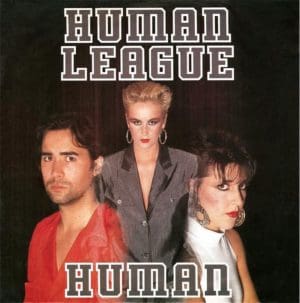
Dream Job
Of course, Oakey featured on one of the best collaborations of the 80s, when he sang Together In Electric Dreams for Giorgio Moroder.
As deadpan as his words can look in print, the look of unabashed joy on Philip’s face when talking about Giorgio is beautiful. “Giorgio was very efficient,” he beams. “Electric Dreams was done in four days, when Giorgio didn’t like to work before 11am, nor after 4pm. He hates overdoing things.
“I sang Electric Dreams twice. After the first one, Giorgio said: ‘Great, we’re finished.’ I said: ‘Hold on, what if anything went wrong? I should do another one for safety.’ ‘Well, OK then.’ And that was it.
“Giorgio’s theory is that, if you have to do a song over and over again, then ‘This song is not for you.’ I was supposed to sing The Never Ending Story, too. I sang it a couple of times, but Giorgio said: ‘This song is not for you.’ It’ll come out at some point – and then you’ll hear that song: it wasn’t for me. I like the Limahl record. The Never Ending Story, it was for him.
“I’m just happy I’ve worked with Giorgio, as he was our absolute hero when The Human League started. More than anyone else, he had the path for The Human League to follow. We just tried to make music that was as good as Giorgio Moroder.”
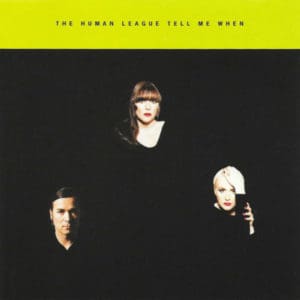
Jam & Lewis
The revelation that there’s a demo somewhere of a second film theme with Moroder is topped by another what-if: Crash was nearly produced by Stock Aitken Waterman. While waiting to hear if Jam & Lewis would work with them, the group met Pete Waterman.
Oakey says: “At that time, Stock, Aitken Waterman had only done Princess’ record, Say I’m Your No.1. Then Jimmy and Terry said yes, and Pete Waterman told us: ‘You should go for the real thing.’ He was right, in that Crash is a very Jimmy and Terry record.”
The general view of Crash is that The Human League felt dominated by their producers, who wanted to sideline the group in favour of session musicians and their own singers. That is not the view of the trio now, though Philip says of their former collaborators: “Jimmy and Terry were brilliant with the singers, but ruthless with the musicians.”
Catherall enthuses over the experience: “They taught us how a studio works. Their studio wasn’t somewhere fancy like Air or Abbey Road, it was just a building in Minneapolis. We came back from Crash with a real vigour to build our own studio, so we did.”
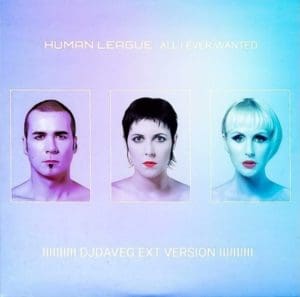
Crash Landing
The actual recording was more fraught, however, as Joanne says: “It was scary. Standing in the vocal booth, I’d think: ‘Look at who these two have worked with. I’ve got to compete with them?’ But they were incredibly lovely about my singing. If they’d been Giorgio Moroder, they might have said: ‘This song is not for you’ about every single song.”
Sulley agrees: “They spent so much time with the three of us. If you weren’t getting a song, it was just: ‘Let’s just stop and have some food.’”
It’s only in hindsight that Philip appreciates how vital Jam & Lewis were: “They’re the only producers we worked with who also wrote songs. Them writing songs, it gives Crash a different dynamic. We didn’t properly understand that at the time, and we never said thanks. Joanne is right, their studio was just an old photographic studio. But it helped that they were natural geniuses with sound. If you’d put a boombox in front of the two of them, they would have created something that sounded incredible.”
While Crash spawned their second US No.1 in Human, Philip names Octopus as his favourite overlooked Human League album – “I love its sound” – while Catherall picks Secrets: “Amazing reviews across the board, a brilliant piece of luck to work with Toy as producers, a great record company in Papillon. It felt like the perfect mix. Then the Papillon guys got ousted and the actual release was a damp squib. That’s a fantastic record, though.”
Anymore Secrets
Fans waiting for boxset editions of any of the Human League albums shouldn’t get their hopes up. “I think we’ve mainly released the songs that are in the vaults,” considers Oakey. “We aren’t like Prince.”
Catherall explains: “We didn’t have that much music when we went into any of the albums, so there’s not a lot of music going spare.” “There was always just enough by the end,” adds Sulley.
Mention that Credo now fetches £300 on vinyl and Susan exclaims: “I’ve got some spare copies in my house!” Philip recalls: “That’s the album where the warehouse closed down immediately it came out, isn’t it? Our manager will have Credo planned to come out as a vinyl edition at some point.”
One special edition the band are planning is a version of Dare in Atmos. The trio have been down to Abbey Road to hear it, and Philip explains: “I think that’s coming out soon. Atmos is very specialist. I’m not super on it when it comes to 3D sound, but if people want to hear Dare in 3D on their headphones, that’s okay.”
There isn’t any chance of an appearance of Romantic? produced by William Orbit, before future Moloko mainstay Mark Brydon took over. “William locked us out of the studio,” claims Joanne. “We were banging on the door, but he was: ‘You can’t come in!’ I think he kept all the mixes and I can’t imagine he’ll let us have them.”
It’s time to let The Human League leave, striding out together as impressively as they entered. As Joanne concludes: “As soon as the festivals are over, we say to each other: ‘What happens if nobody wants us next year?’ We’ve already got some booked in for 2025. That’s such a relief.”
They shouldn’t worry, of course: those big concerts – they are for you.
For more click here
Read More: The Lowdown – The Human League
The post The Human League Interview appeared first on Classic Pop Magazine.
... Continue Reading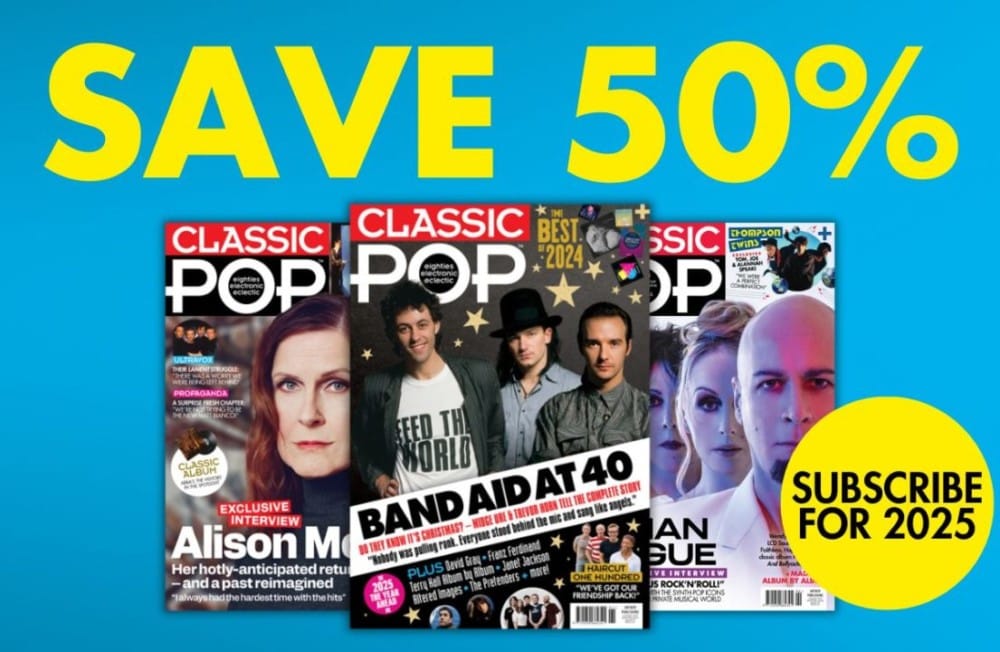
Half Price Sale: Subscribe for 2025 and Save 50%

HALF PRICE SALE STARTS HERE➔
Subscribe for 2025 – join Classic Pop for half the price!
With every issue delivered straight to your door, unlimited digital access, and exclusive discounts and perks, a subscription to Classic Pop will be the cherry on top of your year ahead.
Choose from 6-monthly or annual payment options when you join us – no matter which you choose you’ll save 50% off the cover price, paying the equivalent of just £3.50 per issue.
Why subscribe to Classic Pop?
 ︎ Save 50% off the cover price, and choose between 6-monthly or annual payments
︎ Save 50% off the cover price, and choose between 6-monthly or annual payments ︎ Receive every issue of the print magazine delivered straight to your door
︎ Receive every issue of the print magazine delivered straight to your door ︎ Gain exclusive access to our entire digital archive, going all the way back to Issue 1 of Classic Pop
︎ Gain exclusive access to our entire digital archive, going all the way back to Issue 1 of Classic Pop ︎ Receive special subscriber-only covers of the magazine
︎ Receive special subscriber-only covers of the magazine ︎ Get exclusive discounts on any back issue or special edition
︎ Get exclusive discounts on any back issue or special edition ︎ Gain entry to our YouTube community playlist
︎ Gain entry to our YouTube community playlist ︎ Plus much more!
︎ Plus much more!
Don’t miss out – subscribe to Classic Pop today and head into 2025 with your perfect pop companion.
SUBSCRIBE & SAVE 50% ➔
Terms & Conditions: 50% discount is available for UK and US subscribers paying by recurring payment, and is based on the local cover price. We also have offers available for our overseas subscribers. There are 6 issues of Classic Pop published in a year. Offer code: JAN25WEB. Offer ends: 28th February 2025.
The post Half Price Sale: Subscribe for 2025 and Save 50% appeared first on Classic Pop Magazine.
... Continue Reading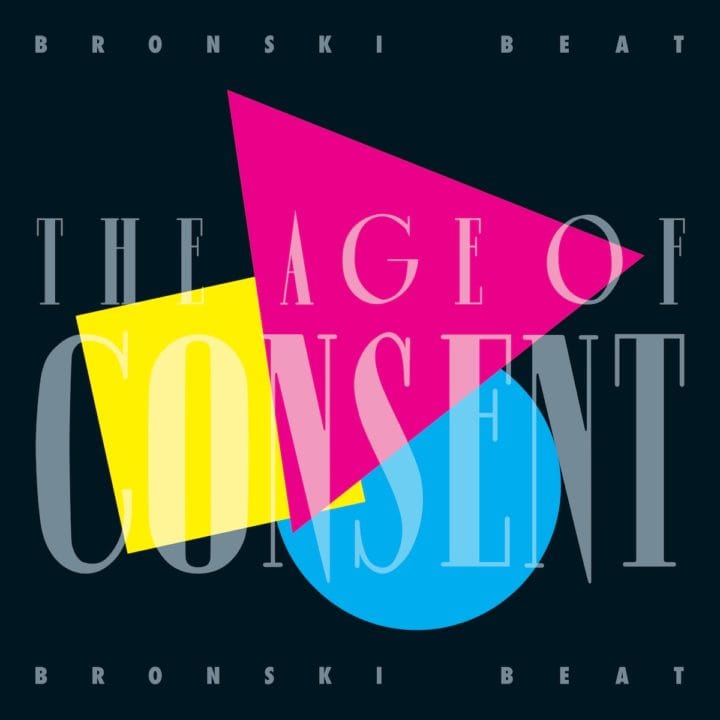
Review: Bronski Beat – The Age Of Consent Reissue

Review: Bronski Beat – The Age Of Consent 40th Anniversary Reissue (London)
★★★★★
Perfect political disco remaining regrettably relevant 40 years on, Bronski Beat’s defining statement gets the comprehensive reissue that it deserves…
Pop stardom was never the key goal for Jimmy Somerville, Steve Bronski and Larry Steinbachek. Buoyed by the success of their debut single Smalltown Boy marching to No.3 in the UK during pop’s gayest year of 1984, The Age Of Consent covered a whole lot more ground, combining sexuality, war and homophobia, plus a sprinkling of covers of standards. It arrived wrapped in a sleeve using the reclaimed imagery of the pink triangle and listing the ages of consent across the planet: this was a manifesto.
And it’s not for nothing that Smalltown Boy has spent the last few months knocking around the lower half of the UK’s Top 100. With nothing to carbon-date it specifically to the 80s, its power, emotional charge and continued resonance has enabled it to become something of a modern-day folk song.
Second hit Why? continued the Smalltown Boy story. Inspired by a gruesome homophobic attack on the band’s friends, it shifted away from gentle longing into a furious, urgently pulsing anger. It’s a call to arms you could do poppers to.
Relevant Now
Past the entrees of those two singles, the trio tackled George and Ira Gershwin’s It Ain’t Necessarily So (which had originally cast doubt on themes from the Bible) and reclaimed Donna Summer’s I Feel Love, after Summer’s iffy remarks about AIDS (“Donna Summer can eat shit,” they told Gay Times: “Now it’s gonna be OUR record.”) They wrapped I Feel Love into a medley with Johnny Remember Me, 1961’s spectral ‘death disc’ chart-topper for John Leyton.
This excellent 4CD reissue gathers up the remastered album with the 1985 remix set Hundreds And Thousands, adding both original and contemporary remixes, as well as a disc of previously unreleased rarities
such as the strident The Power Of The Gold and Go (You & Me), which hint at what the trio had left in the tank. There’s also a bonus DVD collecting their videos and Top Of The Pops performances.
Bronski Beat managed to make the personal political and vice versa. The power of what they created here has only snowballed through the years. Unhindered by fashion or any adherence to trend, with The Age Of Consent they forged a unique position.
While initial critics felt that the use of dance music wasn’t the right vehicle for their themes, Bronski Beat knew exactly what they were doing and who they were speaking to.
They would never be the same again once Somerville left, but this was where they made their impact and legacy. It still totally holds up, as sadly, the album’s themes and issues from 40 years ago are just as relevant now.
Order The Age Of Consent 40th anniversary reissue here
Read More: 1984 – The Year Pop Came Out
The post Review: Bronski Beat – The Age Of Consent Reissue appeared first on Classic Pop Magazine.
... Continue Reading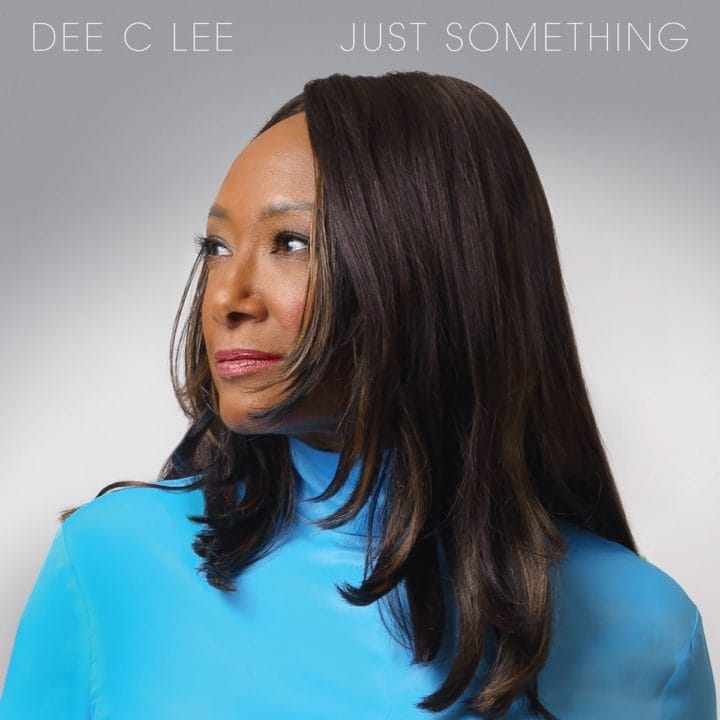
Review: Dee C. Lee – Just Something

Review: Dee C. Lee – Just Something (Acid Jazz)
★★★★ ½
The former Wham! member and Style Councillor returns with Just Something – a stunning modern soul classic
As Dee C. Lee explains to Classic Pop in our Just Something interview, there’s no big drama behind her absence since 1998’s third solo album Smiles was only released in Japan – Dee raised a family, and she just didn’t feel pushy enough to put herself forward for a comeback.
Frankly, screw that: Acid Jazz have got themselves a steal in persuading Lee back into the studio, with Brand New Heavies associate Tristan Longworth producing, plus a backing band comprising assorted BNHs and James Taylor Quartet musicians.
Fate was partly responsible for the hook-up, as Dee bumped into Acid Jazz boss Eddie Piller just when a low-key Style Council documentary reunion made her remember that she enjoyed singing after all.
However it’s come about, praise be that Just Something exists, because it’s wonderful. It sounds like it could have been made at any point since 1972, timeless soul showcasing a luxurious, adaptable voice seemingly preserved in aspic since Lee guested with Guru and Jamiroquai after The Style Council’s split.
The only covers – Weldon Irvine’s joyous I Love You and Norman Connors’ equally celebratory club anthem Be There In The Morning – both date from the 70s. It’s easy to picture flute-driven breeze Don’t Forget About Love and late-night mood Everyday Summer next to Rose Royce and Gladys Knight as classics which should by now have been on Cab Driver FM for decades.
Just Gorgeous
The contemporary aspects are mainly in the lyrics, Dee looking back on her career in the righteous funk of Back In Time, while the atypically seething Trojan cautions: “Goodbye, you trojan horse-ass friend” at a cheating lover, admittedly over delicate piano and sumptuous bass rather than any confrontational beats.
Co-writers include Mick Talbot on the brassily swinging Walk Away and Leah Weller, Dee’s daughter with Paul, herself an underrated singer. Those intimate associates and Cher writer Paul Barry seem to enhance Dee’s vision, rather than forcing their own stamp on her, as the overall classic feel stays consistent. That Lee pulls off penning a new song cheekily titled For Once In My Life, a defiant funk holler, shows how confident she’s become now she’s back in the game.
Only acoustic ballad Mountains resembles a filler, but that’s a rare misstep. After so long away, it’s remarkable how assured Dee sounds. Her songwriting matches her voice, which is some feat. For someone who seemed to epitomise the 20 Feet From Stardom maxim in Wham! and The Style Council, this is a late-blossoming classic. Just Something? Just gorgeous.
Order here
Read More: The Rise Of Wham!
The post Review: Dee C. Lee – Just Something appeared first on Classic Pop Magazine.
... Continue Reading
Wham! land Christmas No.1 2024 with festive favourite

Wham!’s Last Christmas is the Christmas No.1 2024, making it the only song in UK history to achieve such a feat for two consecutive years.
Around the world, Last Christmas continues to resonate with people all over the world, peaking at its highest ever position in its Billboard history at No.2 in Canada where it went Diamond this week, and No.3 in the US. Across Europe, the song has reached No.1 in the Netherlands for the first time ever, has been No.1 in Sweden for four consecutive weeks, and currently sits at the top of the charts in Austria, Germany and Poland.
Wham!: Last Christmas Unwrapped, a brand new Christmas special that tells the story of how George Michael and Andrew Ridgeley’s Wham! turned one song into a seasonal phenomenon, debuted on BBC 2 in the UK this month, and is now available to watch on demand via BBC iPlayer.
Watch the trailer the below:
It’s Whamageddon!
Originally, released by Wham! back in December 1984, the seven-time multi-platinum classic peaked at No.1 in 16 countries upon its release and is officially the fourth highest-selling single of all time in the UK. The song has now claimed the No.1 spot nine times and has amassed an incredible 5 billion combined streams. Now, 40 years on, the song has woven itself into the very fabric of Christmas.
The song’s lasting impact continues with breathtaking reimagined covers from today’s superstars, most notably Sabrina Carpenter and Chappell Roan who duet with the iconic song on Carpenter’s A Nonsense Christmas on Netflix.
Wham!, George Michael Entertainment and Sony Music recently commemorated 40 years of Last Christmas, by releasing a very special Last Christmas 40th Anniversary EP, available in limited edition vinyl, CD and digital.
The Last Christmas 40th Anniversary EP is available now and features all the original 7″ and 12″ versions plus George Michael’s 2006 previously unreleased performance of Last Christmas at London’s Wembley Arena. The EP is available on limited edition 12″ Snowflake white vinyl, 12″ picture disc, 12″ zoetrope picture disc, plus CD and digital.
Order here
Read More: 25 Essential Christmas Pop Songs
The post Wham! land Christmas No.1 2024 with festive favourite appeared first on Classic Pop Magazine.
... Continue Reading
Cara Delevingne stars as Elton John in new Step Into Christmas video

Elton John has unveiled a new video for his seasonal classic Step Into Christmas, starring Cara Delevingne.
The new video reimagines what it was like behind the scenes for the now iconic original 1973 visual, and features British actress and model Cara Delevingne as Elton John.
More than 50 years after Elton’s classic performance, the kitsch new video sees Cara brilliantly mirroring Elton’s choicest dance moves and iconic facial expressions from the original video.
Watch below:
Step Into Christmas
Elton says: “I saw Cara at Glastonbury last summer, and we talked about how much we’d love to work together if the right idea came up. She’s hilarious to spend time with, we both have quite a self-deprecating sense of humour. When someone suggested the idea of her playing me in a riff on the 1973 Step Into Christmas video, I just thought it was the perfect opportunity. Thank God Cara thought the same, because it came out great.”
Cara added: “Elton has always been an idol of mine, to say his music has had a deeply profound effect on me is an understatement. To be asked by him to PLAY him in this recreation was a dream that I didn’t know I had until it happened. Honestly, I wish I could pretend to be Elton every day. I hope that Elton may one day return the favour and agree to play me in my not yet developed, written, pitched or funded biopic. Fingers crossed.
Never Too Late
Originally released on 23 November 1973, Step Into Christmas peaked at No. 1 on the Billboard Christmas Singles chart in the US and No.24 during its initial seven-week run on the UK Singles Chart. It has returned over the past decade or so to become a seasonal favourite.
The reimagined video comes after Elton’s new documentary, Elton John: Never Too Late, premiered on Disney+. Directed by R.J. Cutler and David Furnish, the documentary follows Elton as he looks back on his life and the astonishing early days of his 50-year career in an intimate and inspiring full-circle journey.
For further information click here
Read More: 25 Essential Christmas Pop Songs
The post Cara Delevingne stars as Elton John in new Step Into Christmas video appeared first on Classic Pop Magazine.
... Continue Reading
25 essential Christmas pop songs

We’ve got your festive playlist covered, pop fans. Here are our top 25 Christmas songs from your favourite classic pop artists that’ll have you wishing it was Christmas every day…

25. Coventry Carol – Alison Moyet
We kick off this Christmas countdown of classic pop songs with something slightly more traditional: Alison Moyet’s version of the 16th century Coventry Carol. King Herod’s story may not be the most popular festive tale to tell, but Moyet makes her musical talent known in this electronic take on the British carol. It featured on the album A Very Special Christmas in 1987, which has cover art designed by Keith Haring and was produced to benefit the Special Olympics.
24. Christmas (Baby Please Come Home) – U2
In 1987, Bono and the gang released their version of festive heart-wrencher Christmas (Baby Please Come Home). Their rendition of the song was recorded during a soundcheck on the Scottish leg of their Joshua Tree tour, and features backing vocals from original singer Darlene Love. Also appearing on the compilation A Very Special Christmas, it later resurfaced on the 2004 album Unreleased & Rare in the digital boxset The Complete U2.
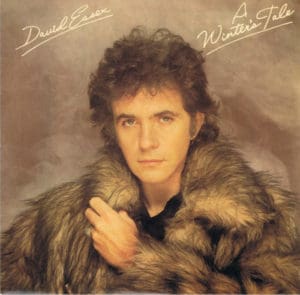
23. A Winter’s Tale – David Essex
David Essex expresses how personal sadness seems insignificant “on a worldwide scale” in this wintry ballad penned by Mike Batt and Tim Rice. Historically divisive as a Christmas song, the Classic Pop team voted in favour of giving it a place in our countdown.

22. Every Day’s Like Christmas – Kylie Minogue
We’re skipping forward a few decades with this next entry: Kylie’s 2016 feel-good Christmas hit Every Day’s Like Christmas, which was a popular choice among Classic Pop readers. Taken from her 13th studio album, 2015’s Kylie Christmas, we highly recommend checking out the Stock Aitken Waterman remix if you want to be transported back to the 80s!
21. Christmas in Hollis – Run-D.M.C.
Okay, we admit, we’re straying a little far from the pop world by including this hip-hop classic, but we couldn’t resist! Run-D.M.C. give us an insight into Christmas in their hometown of Queens in the accompanying video, which came out on top as Rolling Stone’s Best Video Of The Year 1987. It was included on two 1987 Christmas compilation albums: A Very Special Christmas and Christmas Rap.
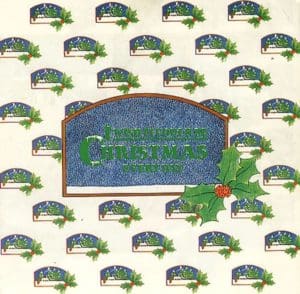
20. I Wish It Could Be Christmas Everyday – Wizzard
Featuring a little further down the list than you might expect, because we wouldn’t want to be too predictable, is the Christmas glam-rock anthem I Wish It Could Be Christmas Everyday. Wizzard shout their way through this one with obligatory children’s choir backing vocalists; it’s not exactly groundbreaking pop, but it’s still a festive classic. First released in December 1973, it was beaten to the Christmas No.1 spot by Slade…
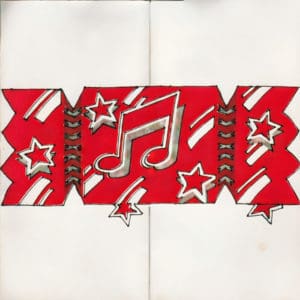
19. Merry Xmas Everybody – Slade
As with the previous entry, we feel that Slade’s 1973 No.1 hit is a tad overrated as a Christmas pop song. That being said, the festive season doesn’t quite feel complete until we’ve heard Noddy Holder shout “It’s Chriiiiiiiiistmaaaaas!”, so it makes the cut!
18. Winter Wonderland – Eurythmics
Over 200 different artists have performed their own versions of this 1934 Felix Bernard song, but there’s nothing quite like Eurythmics’ take on it. The eery opening makes for even more satisfaction when the up-beat chorus chimes in, and Annie Lennox glides effortlessly along the vocal line. It too appeared on 1987’s A Very Special Christmas album.

17. All I Want For Christmas Is You – Mariah Carey
We’ve spent more than 20 years attempting to hit that final top note, and we’re still going! Despite being released in 1994, later than most of our selections, this song has definitely earned its place at the festive table as a bonafide Christmas classic, Going triple-platinum in the UK. Due to the song’s lasting impact, Carey has been dubbed the “Queen of Christmas”.
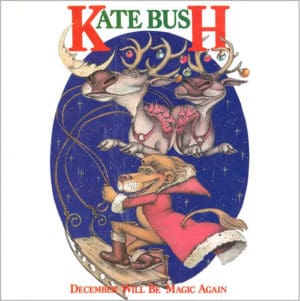
16. December Will Be Magic Again – Kate Bush
December Will Be Magic Again was another popular choice amongst Classic Pop readers, and peaked at No.29 in November 1980. No promotional video was filmed for this single, but an alternative recording of the song was performed on Kate Bush’s 1979 Christmas television special where the singer’s usual ethereal vocals are particularly stunning.
15. Mary’s Boy Child/Oh My Lord – Boney M.
This mash-up of Harry Belafonte’s 1956 hit with original song Oh My Lord proved to be a Christmas smash for Boney M., who bagged themselves a Christmas No.1 with this Eurodisco-meets-reggae track. When Jester Hairston, who originally wrote Mary’s Boy Child for his choir, found out how well Boney M.’s cover had done, he said: “God bless my soul. That’s tremendous for an old fogey like me”.
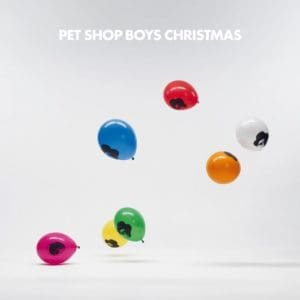
14. It Doesn’t Often Snow At Christmas – Pet Shop Boys
Pet Shop Boys don’t disappoint with this synth-pop Christmas cracker, as Neil Tennant reminds us that we don’t need all the traditional trimmings to enjoy the festive season. Originally an exclusive 1997 fan club single, a new version was included on the 2009 Christmas EP alongside covers of Madness’ My Girl and Coldplay’s Viva la Vida.

13. Thank God It’s Christmas – Queen
Queen look back on what 1984 had to offer in this festive pop-rock single written by Brian May and Roger Taylor. It’s a sentiment we can all agree with this year, as we anticipate a short break from the constant onslaught of depressing news. The single spent six weeks in the UK charts over Christmas 1984 and new year of 1985. It appears on the Christmas compilation LP The Edge of Christmas and a bonus EP packaged with the deluxe edition of their album The Works in 2011.
12. Santa Claus Is Coming To Town – The Pointer Sisters
These American singing sisters put their own R&B stamp on this much-covered song and we can’t get enough of it at this time of year! This is a live performance video that has been dubbed with the original recording, so never fear: you’ll still get to hear them cry “I want a bicycle!” Bruce Springsteen’s rendition was released as the B-side to My Hometown, from his Born in the U.S.A. album, and it remains a fan favourite when The Boss plays it live.
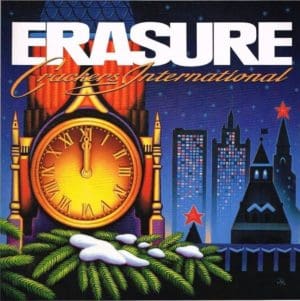
11. She Won’t Be Home – Erasure
A much under-appreciated Christmas song, in our humble opinion. Part of 1988’s Crackers International EP, which peaked at No.2, Erasure were enjoying their imperial phase at this time. In fact, there were several Christmas contenders from the synth-pop duo, but this melancholic track somehow helps us forget our sorrows, so it comes out on top.

10. December Song (I Dreamed Of Christmas) – George Michael
George Michael is, unsurprisingly, always in the hearts and minds of Classic Pop readers at Christmastime, and this heart-warming festive ballad was a highly-requested entry. The importance of family is George’s key message here, and if the quirky animated video, featuring the singer as a boy, doesn’t bring a tear to your eye then we don’t know what will!
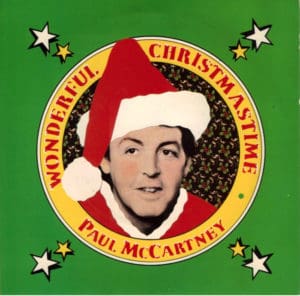
09. Wonderful Christmastime – Paul McCartney
Despite appearing in the music video, Wings didn’t feature on the original recording of Wonderful Christmastime. More curiously still, the choir of children practised all year long simply to sing “Ding Dong Ding Dong” in unison. These mysteries aside, it wouldn’t quite be Christmas without Macca, and this 1979 hit is a festive classic.

08. Rockin’ Around The Christmas Tree – Mel & Kim
A brilliant cover version of Brenda Lee’s original Christmas song, all in the name of Comic Relief. It has a great video to match with Mel and Kim hosting a Christmas party which includes an appearance from Smith’s comedy partner Griff Rhys Jones, carol singers played by Curiosity Killed The Cat, as well as Spitting Image puppets of Bette Midler and Tina Turner. However, we’d like to start an official petition to have the thumbs-up in front of Rolf Harris’ portrait replaced with a big thumbs-down, if possible.

07. Step Into Christmas – Elton John
Elton John is, in many ways, synonymous with Christmas and recently released a new festive song with Ed Sheeran. But nothing can beat this classic from 1973. While “Welcome to my Christmas song…” may not be his most genius lyric, it fits perfectly with the eccentricity of this holiday single. It was released as a stand-alone single in November 1973 with the song Ho, Ho, Ho (Who’d Be A Turkey At Christmas) as the B-side and later appeared on Elton John’s Christmas Party album.

06. Last Christmas – Wham!
It’s arguably one of the most iconic Christmas pop songs of all time, and we’re transported straight to the festive season whenever we hear that jingle-bell synth sound. Wham! donated all the royalties from the Last Christmas release to the Ethiopian famine. Peaking at No.2 when it entered the chart in 1984, it would go on to hit the top spot in 2021 and 2022, however in 2023, Wham! finally secured the coveted Christmas No.1 for the first time – a whole 39 years in the making.
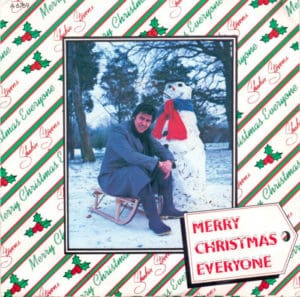
05. Merry Christmas Everyone – Shakin’ Stevens
When we hear that key change, we know it’s Christmastime, and we’re not alone: since its original release in 1985, Merry Christmas Everyone has amassed over 60 weeks in the charts. To date it remains the last No.1 single for Shaky in the UK. In time for Christmas 2015, Stevens released a new version of the song as a charity single in collaboration with The Salvation Army. While the revamped version failed to chart, the original returned to the Top 40.
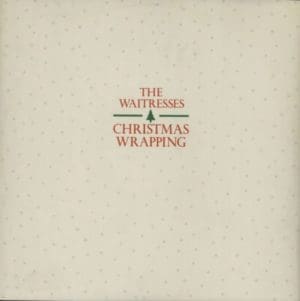
04. Christmas Wrapping – The Waitresses
With excellent lyrics and a high-energy musical performance, this is a truly brilliant Christmas song from the US new wave outfit. The story of a busy single woman facing the usual festive stress was an unexpected hit from The Waitresses, though unfortunately it became the straw that broke the camel’s back when its success apparently caused the rift that ended the band. First released on ZE Records’ 1981 compilation album A Christmas Record, it later appeared on the band’s 1982 EP I Could Rule The World If I Could Only Get The Parts.

03. Do They Know It’s Christmas? – Band Aid 1984
This was the choice of most Classic Pop readers, and it still serves as an important yearly reminder to consider the lives of those less fortunate at a time of mass consumption. A heart-warming display of togetherness, along with strong vocal performances from legendary 80s artists, Do They Know It’s Christmas is a truly brilliant Christmas song. Released in the UK on 7 December 1984, it sold a million copies in its first week and entered the chart at No.1 – where it stayed for five weeks.

02. Driving Home For Christmas – Chris Rea
Apparently Chris Rea never intended to write this Christmas song, but was testing pianos and discovered the light, jazzy introduction that now conjures festive thoughts worldwide. We’re very glad indeed that Driving Home For Christmas was conceived, and it’s one of our top picks here. The first version was originally released as the B-side to the single Hello Friend in 1986, however a re-recorded version appeared on his New Light Through Old Windows compilation album in 1988 as well as his The Christmas EP.
01. Fairytale Of New York – The Pogues & Kirsty MacColl
The UK’s most-played seasonal song of the 21st century, it’s no surprise that Fairytale Of New York takes the top spot in our countdown. We’re yet to see another festive tune that has you performing a drunken ballad one minute and then dancing a céilidh the next. Sadly, we’ve now lost both vocalists: Kirsty MacColl tragically died in a boating accident on 18 December 2000 while on holiday in Mexico, and The Pogues frontman Shane MacGowan, who was born on 25 December 1957, passed on 30 November 2023. Thankfully we have this iconic number to remember them by every year.
The holiday season can affect our mental health in lots of different ways. For help and support click here
Read more: Band Aid: The Next Generation
The post 25 essential Christmas pop songs appeared first on Classic Pop Magazine.
... Continue Reading
Review: Thompson Twins – Into The Gap 40th Anniversary Reissue

Review: Thompson Twins – Into The Gap 40th Anniversary Reissue (BMG)
★★★★☆
For its 40th birthday, Thompson Twins’ biggest commercial moment receives a thorough 3CD set filling in all the gaps of a band relishing the spotlight…
The more you look at Thompson Twins, the more remarkable their success appears. That they were able to be so mainstream is testament to how early 80s pop kids were far more open to outsiders than British and US governments would wish.
Tom Bailey’s move from being at the centre of a trippy anarcho collective to crafting pop bangers to order is a volte-face worthy of Adam Ant’s transition from punk to king of the wild frontier.
Doing it with a black percussionist and a woman whose lyrics inhabited the trio’s feelings was unique, even in the forward-thinking pop eccentrics of the era.
Quick Step & Side Kick had shown how naturally making pop came to the trio. Ironically, the confidence meant they could sound more natural second time around. Allowing instruments other than synths back into the mix instantly paid off on Hold Me Now, whose success before the album had finished recording showed that being more emotional was the way forward.
You Take Me Up
Remarkably, the album’s other singles, including the similarly tender Sister Of Mercy and soaring You Take Me Up were written next. It allowed for a carefree abandon, whether in allowing Alannah Currie to get more political in near title track The Gap’s adventurous travelogue or for the trio to create a tense funk on Day After Day and fame comedown on No Peace For The Wicked.
Only the maudlin Who Can Stop The Rain hasn’t aged well: it should have been swapped for the preceding beauty of Storm On The Sea as the album closer.
Not that the public cared much for such concerns: it was No.1 for three weeks here and went Top 10 Stateside. It couldn’t last and they were all but done by Here’s To Future Days. Their refusal to reform, addressed elsewhere this issue, has enabled Thompson Twins to become progressively more enigmatic, but also commercially overlooked.
That’s addressed on their first thorough expanded reissue. Edsel’s 2008 2CD reissue (repressed in 2016) was decent, but the new 3CD is the first to round up all the assorted B-sides, cassette mixes and promo-only versions, including a sprightly Francois Kervorkian remix of You Take Me Up.
The omission of the tour film Into The Gap Live as a DVD/Blu-Ray is the only frustration: Joe Leeway was one of the great designers of 80s concerts. His work fading into the background should be readdressed.
At least all the music is finally here. Thompson Twins aren’t performing, but at least they’re finally talking. Eloquent as they are, it’s only when you hear Into The Gap that you can appreciate how electric they were at grasping their opportunity with both hands.
Order here
Read More: Thompson Twins / Tom Bailey – album by album
The post Review: Thompson Twins – Into The Gap 40th Anniversary Reissue appeared first on Classic Pop Magazine.
... Continue Reading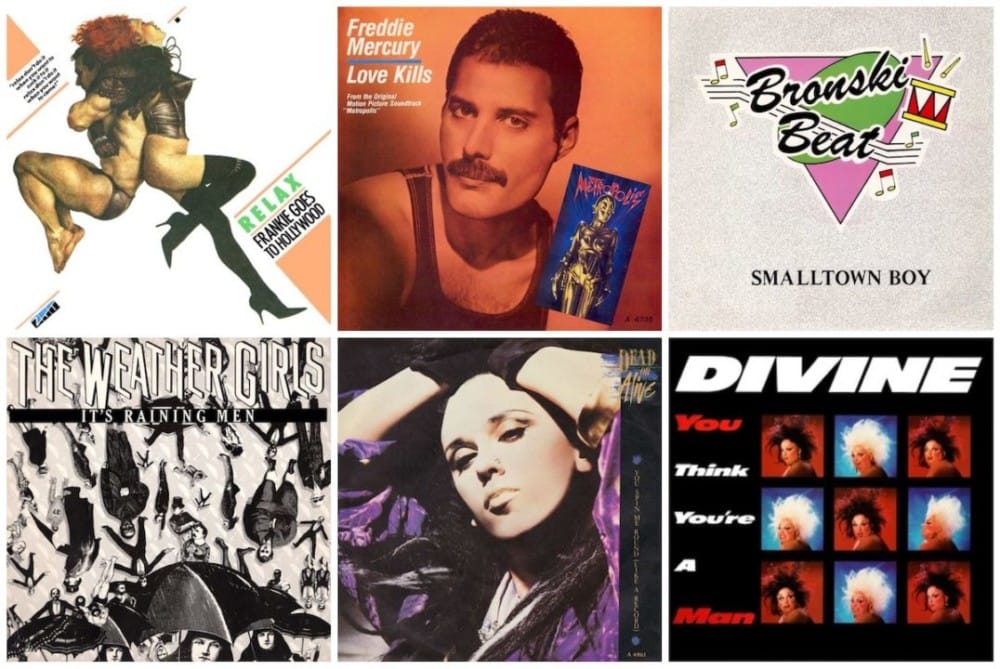
1984 – The Year Pop Came Out

As pop and politics clashed to fight for sexual liberation and queer visibility, some distinctive and brave new voices emerged as the loudest, whatever the repercussions… here we look at 1984 – The Year Pop Came Out
Looking back at the kaleidoscope of colourful characters that epitomised the gender ambiguity of the early 80s, it’s easy to mistakenly credit them the seismic shift in attitudes towards sexual politics that reached its crescendo in 1984. While there’s no question that the New Romantics, with their scintillating synth-pop and immaculately made-up visages, or Adam Ant and Siouxsie Sioux making fetish-wear fashionable sparked debate about gender norms and sexual identity, they were more about fashion statements than political ones.
As devotees of Bowie, Bolan and glam rock, the bright young things monikered the “gender benders” by the press adopted the tropes of their predecessors, blurring the lines between what it was to be masculine and feminine with their outrageous attire, but in 1984 it was still very much a case of style over substance. For many of those that would later find the courage and the voices to become progressive forces of a new era of queer liberation, it was not only in vogue to be vague, it was imperative to achieve success.
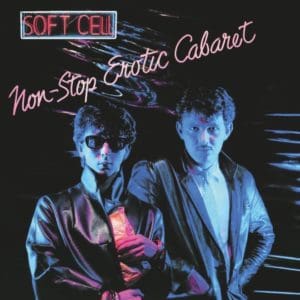
Fight For Equal Rights
“In the early 80s you were signed to a record label and told you had to invent girlfriends, and if you didn’t radio would never play your records again and you’d be ostracised by the press. In short, your career would be over,” Marc Almond told The Herald. “I didn’t want to say I wasn’t gay, but I didn’t say I was gay either. And on top of that, I didn’t want to be defined as a ‘gay artist’. I just wanted to be a pop singer. I didn’t come out publicly until 1987 and I wish I’d done so sooner.”
Almond was just one of the successful artists who later used his platform to fight prejudice and seek equal rights for the gay community. Flamboyant in their fashion but subdued in their public views, Boy George, Elton John, George Michael and Freddie Mercury telegraphed gayness but were hiding in plain sight in ’84.
Whenever the subject of sex was raised in interviews, Boy George, at the time the asexual, family-friendly pantomime dame of pop, was on hand with a witty riposte such as he “preferred a cup of tea to sex” while behind the scenes, his turbulent relationship with Culture Club’s drummer Jon Moss was the source material for many of the group’s hits. Elton John, who had previously admitted to being bisexual, married studio engineer Renate Blauel and George Michael stopped shoving shuttlecocks down his shorts and dressing up as an airline pilot to cultivate a safer image (complete with an identikit Princess Diana haircut) and paraded a stream of glamorous girlfriends.
Breaking Free
Although revered as one of rock’s most flamboyant frontmen, Freddie Mercury never publicly addressed his sexuality, accompanied to most public events by ‘soulmate’ Mary Austin. 1984 was the year he famously persuaded his bandmates (incidentally, naming the group Queen was always intended to mean regal rather than the often-misunderstood double entendre) to dress in drag as Coronation Street-type characters for the video to I Want To Break Free and was heavily influenced by underground gay clubs for his solo material. He was a regular at New York’s S&M clubs such as The Anvil and Mineshaft and not only appropriated the look of the clubs’ patrons, the moustache and tight vest, but also the pumping hi-NRG soundtrack for his solo material.
“I don’t blame them [for hiding their sexuality] because everyone was terrified,” Almond continued. “Then Jimmy Somerville came along, and he really put himself on the line, singing about openly gay themes. He was incredibly brave while the rest of us were hiding behind the eyeliner!”
The releases of Bronski Beat’s Smalltown Boy and Frankie Goes To Hollywood’s Relax were pivotal in highlighting gay visibility, with the band’s frontmen, Jimmy Somerville and Holly Johnson respectively, the out and proud voices needed to speak out against the prejudice levelled at the gay community. In terms of visibility and representation, gay men were largely still portrayed as camp and effeminate, the punchline to the jokes on campy sitcoms. Though fighting the same cause, their approaches were very different. Bronski Beat’s came from the heart, Frankie’s from the groin.
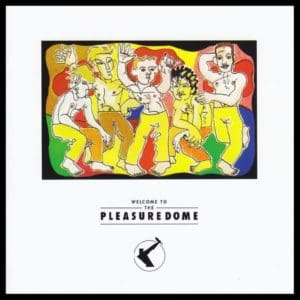
Relax, Don’t Do It
“Frankie Goes to Hollywood were really the first ones who came out and said, ‘Well, yeah, we’re gay.’ And it caused a shockwave, but it also didn’t hurt them – it did the opposite. It propelled Relax to being huge,” Bernard Rose, director of the Relax and Smalltown Boy videos, told Yahoo Music. “Bronski Beat were around before that happened, but their record came out after, and they were coming out into a market where the Frankie thing had already happened. I don’t exactly think it was like their thunder was stolen, but they weren’t the first. But I do think their approach was much more politicised and much more serious.”
While Relax was very animalistic, the pounding, hi-NRG beat and sexual lyrics was enough to get the record banned by the BBC before the video, set in a S&M club and exploring various fetishes, even entered the equation. Bronski Beat, on the other hand, dealt with the emotional side. The haunting lament of Smalltown Boy dealt with the brutal reality of being ostracised for being gay and though Jimmy Somerville’s own story, it spoke to the misfit in everyone. The follow-up, Why?, was a militant attack on homophobia and prejudice – “Contempt in your eyes as I turn to kiss his lips… Can you tell me why?”

Tell Me Why?
Because Somerville essentially embarked upon a music career as a happenstance of his activism (he began singing while filming a documentary about homosexuality called Framed Youth: The Rise Of The Teenage Perverts), he was out and proud, a dangerous cocktail that earned him disdain not only from the public and press, but also from his peers, even those still in the closet. Whether it was a result of jealousy or fear on their part, he spoke openly in interviews of dirty looks and homophobic comments backstage at Top Of The Pops or award shows.
Rather than be diminished or silenced for his sexuality, he was unapologetic, openly lusting after other pop stars in the pages of Smash Hits, calling the band’s album The Age Of Consent to highlight the UK’s regressive stance on gay issues and featuring the telephone number of the Lesbian & Gay Switchboard on their records.
Thatcher’s Britain
The fact that he was experiencing such hostility and vitriol in what was deemed a much more progressive business shone a light on how hostile life was for gay people in Thatcher’s Britain. Under fire in the press, from the police and politicians, it is little wonder that in the face of such persecution and prejudice, gay people sought solace in music.
One of the most primal ways to express themselves and experience the sheer joy and liberation arrived in the form of hi-NRG, a direct descendent of disco with a tougher, more electronic sound. Obviously influenced by Giorgio Moroder, it had become the sound of the gay underground scene for a couple of years. Its breakthrough into the mainstream further evidenced acceptance of gay culture. Originating in San Francisco by DJ/producer Patrick Cowley at his Menergy club nights at The EndUp in 1982, hi-NRG (originally called hi-NRG Disco) was an up-tempo take on disco with the hi-hat removed, replaced by a harder bass and the inclusion of a staccato synthesizer and handclaps.
Two hugely influential DJ-meets-drag partnerships, Patrick Cowley with Sylvester and Bobby Orlando with Divine, helped populate the sound. While disco classics spoke of hardship, pain, and emotional defiance in the face of adversity, this new variation was its sluttier sister injecting a sexual frankness into the lyrics. The style quickly took off in New York clubs such as The Saint before making its way to Europe thanks to influential DJ Ian Levine, who packed his sets at London’s Heaven nightclub with tracks such as Sylvester’s Do Ya Wanna Funk?, Divine’s Native Love (Step By Step) and Passion by The Flirts.
Heaven Sent
As songs that had dominated the dancefloors of these gay meccas for well over a year made their way into the Top 40 singles charts, the transference of gay culture proved lucrative (later dubbed “the Pink Pound”). Hazell Dean’s Searchin’ (I’ve Got To Find A Man), Gloria Gaynor’s I Am What I Am and The Weather Girls’ It’s Raining Men were all massive hits. Ian Levine enlisted US diva Evelyn Thomas for High Energy, a track which immortalised the genre over a beat remarkably similar to Frankie’s Relax (though Levine maintains he was influenced by the Village People’s In The Navy).
As hi-NRG crossed over, it transcended the big cities and became the predominant sound of the clubs across the country. DJ and aspiring producer Pete Waterman was in a gay club in Coventry in 1983 when he first heard hi-NRG. “I was watching the marketplace from a punter’s point of view,” he told The Spectator. “New Order’s Blue Monday was just happening, and I was thinking, ‘Look at this, there’s something going on here’. I had a good four to five months watching the marketplace as an insider almost.”
The revelation became the impetus of one of music’s most successful teams of all time. In January 1984, Waterman had enlisted songwriters/producers Mike Stock and Matt Aitken and together they came up with a formula that married the dance sound with pop melodies. “Most examples of hi-NRG were short on song,” recalls Mike Stock. “I was keen to bring structured songs into the style. We saw the club scene as a genuine way to reach people who might buy records. We took forward some of the dance elements into the more pop projects.”
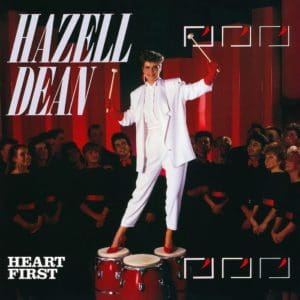
The Hit Factory
Their formula became Stock Aitken Waterman’s gateway to pop success. “We weren’t brazen enough to think we could take on EMI or Warner or the big companies,” Waterman states. “That never even came into our thoughts. We just knew the major record companies were not focused on a market I knew well and loved – the gay dance market. They weren’t interested.”
By the summer of 1984, SAW had achieved a UK Top 20 hit with Divine’s You Think You’re A Man, the first but not the last hi-NRG star to bolster their roster. Hazell Dean’s Whatever I Do (Wherever I Go), the first hit they’d also written, broke the Top 10. Both of those records were instrumental in attracting Dead Or Alive after Pete Burns fell in love with them. After presenting them with a demo of You Spin Me Round (Like A Record) and an order to “make me sound like Divine”, the song topped the charts – a first for both SAW and Dead Or Alive.
Out & Proud
As is often the case when an underground phenomenon translates into mainstream success, it instantly loses its cool factor. Critics were already writing hi-NRG’s obituary, wildly prematurely as it turns out as it not only was a template for many big hits to come, but also the foundation for SAW’s unstoppable run of hits spanning the rest of the decade and beyond (it has to be said, courtesy of a string of ‘safe’, pop-star-next-door types).
Obituaries were sadly becoming all too common as the year drew to a close with gay nightlife decimated by the spread of HIV and AIDS which was wiping out gay men in droves. Aside from the utter devastation and tragedy of the deaths themselves, the ‘gay plague’ tag had an immeasurable impact on a community already under attack. Gay people were once again shamed and vilified, eradicating much of the progress of the past couple of years. Although some very tough times were still to follow, the merging of pop and politics ensured that 1984 was undoubtedly the year pop kicked open the closet door, and it was never closed again.
For LGBTQIA+ mental health support click here
Read More: Make It Big: The Story Of 1984
The post 1984 – The Year Pop Came Out appeared first on Classic Pop Magazine.
... Continue Reading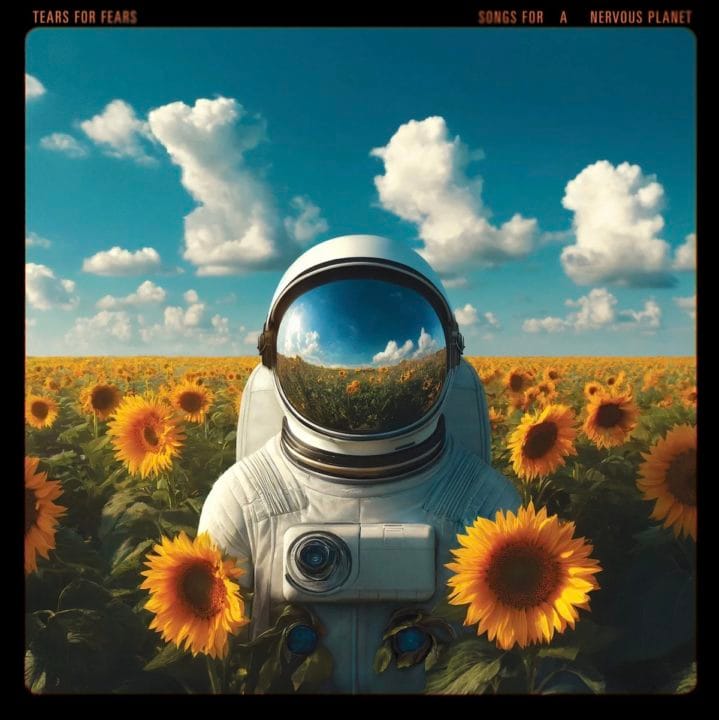
Review: Tears For Fears – Songs For A Nervous Planet

Review: Tears For Fears – Songs For A Nervous Planet (Concord)
★★★★☆
As if Curt and Roland’s first ever official full live album isn’t enough, there’s an additional bonus EP of four brand new songs to investigate on Songs For A Nervous Planet
There were two Tears For Fears live albums before. But Secret World from Paris on 2005’s Everybody Loves A Happy Ending tour was only ever available in South America and France, while the Songs From The Big Chair-era Live At Massey Hall Toronto, Canada/1985 was a limited-edition Record Store Day exclusive in 2021.
That RSD release seems to have piqued’s interest: they have come a long way live since 1985, but where’s the proof? As Smith said in Songs For A Nervous Planet’s announcement: “A lot of people don’t know that we’re a good live band, actually!”
So, here’s an 18-song gig recorded in July 2023 at the 7,500 -capacity Franklin FirstBank Amphitheater in Tennessee, released alongside a movie of the show, Tears For Fears Live (A Tipping Point Film). Smith’s statement emphasised that Tears For Fears concerts aren’t simply “Two people with a couple of keyboards.” They’ve become road warriors since reforming, amply demonstrated here.
The Tipping Point
Indeed, the only problem with Songs For A Nervous Planet is that it occasionally strays into muso territory. Badman’s Song has long been a concert highlight but, when you can’t see the band’s virtuosity or Smith and Orzabal’s joy in keeping the jamming together, 10 minutes of it derails the flow somewhat. Backing singer Lauren Evans leading Suffer The Children feels a little overblown outside of a show’s context, too.
That’s to pick holes in a worthwhile document of how adventurous a Tears For Fears gig is. The frantic Change is particularly stunning, its breathless arrangement perfectly updated, while Sowing The Seeds Of Love was always designed for the biggest stages and flourishes here.
The Tipping Point songs naturally dominate, but no matter: having toured so much before going back to the studio, Long, Long, Long Time and Rivers Of Mercy are perfect elder statesmen musings, mature without being earnest. Only Orzabal’s uncomfortable near-rapping in My Demons doesn’t work in concert.
In addition to hearing how good Tears For Fears are live, there’s more evidence of how they’re flying in the studio, too. At the start of the album, here are four more new songs almost casually tossed into the mix.
The gorgeous single The Girl That I Call Home was Orzabal’s attempt to write a love song for his new wife, Emily. There’s an even better one with the infectious XTC psychedelia of Emily Said, that comes complete with a Mott The Hoople-style glam coda. More of that, please. Also, Smith gets to dazzle on the haunting Astronaut.
The planet might be nervous but, live and in the studio, Tears For Fears have every right to be confident.
Order here
Read More: Making Tears For Fears – The Hurting
The post Review: Tears For Fears – Songs For A Nervous Planet appeared first on Classic Pop Magazine.
... Continue Reading
